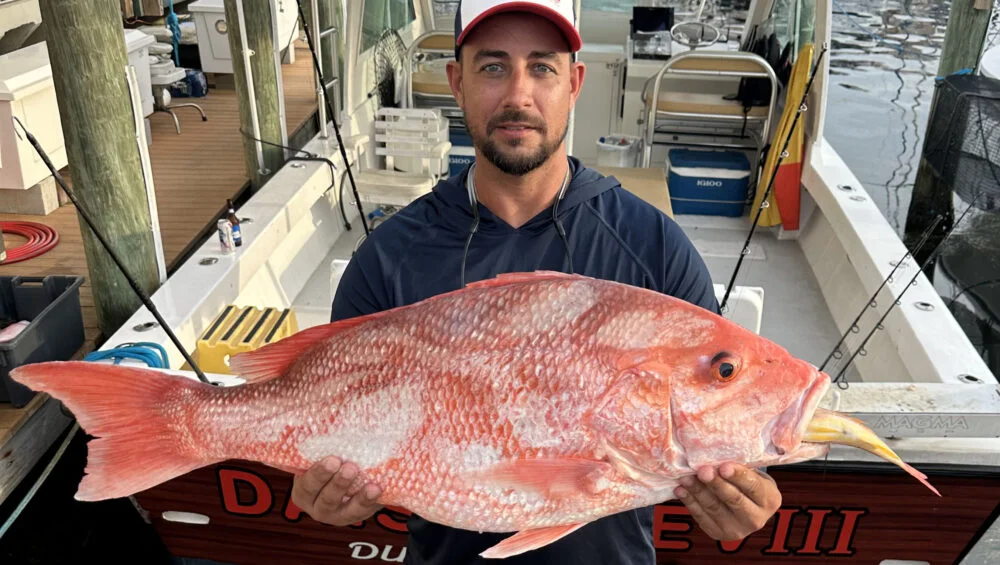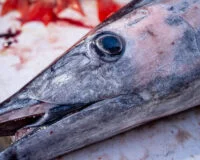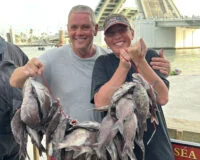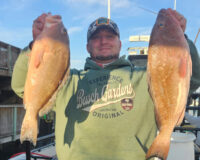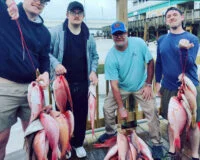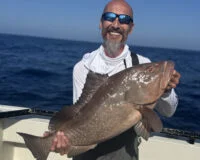Inshore Fishing Report
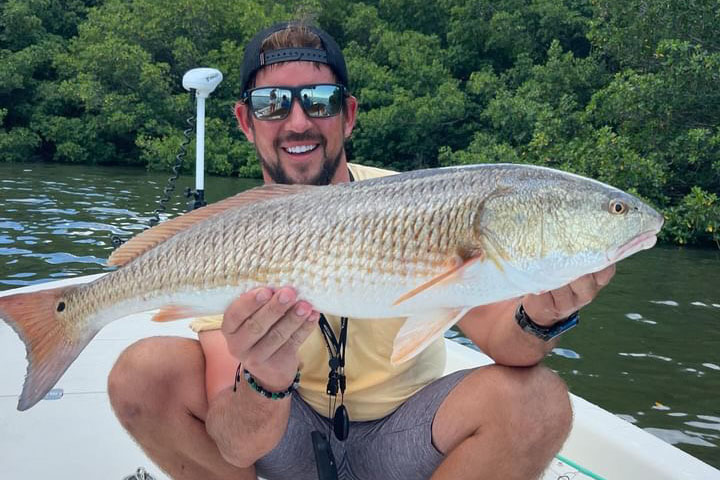
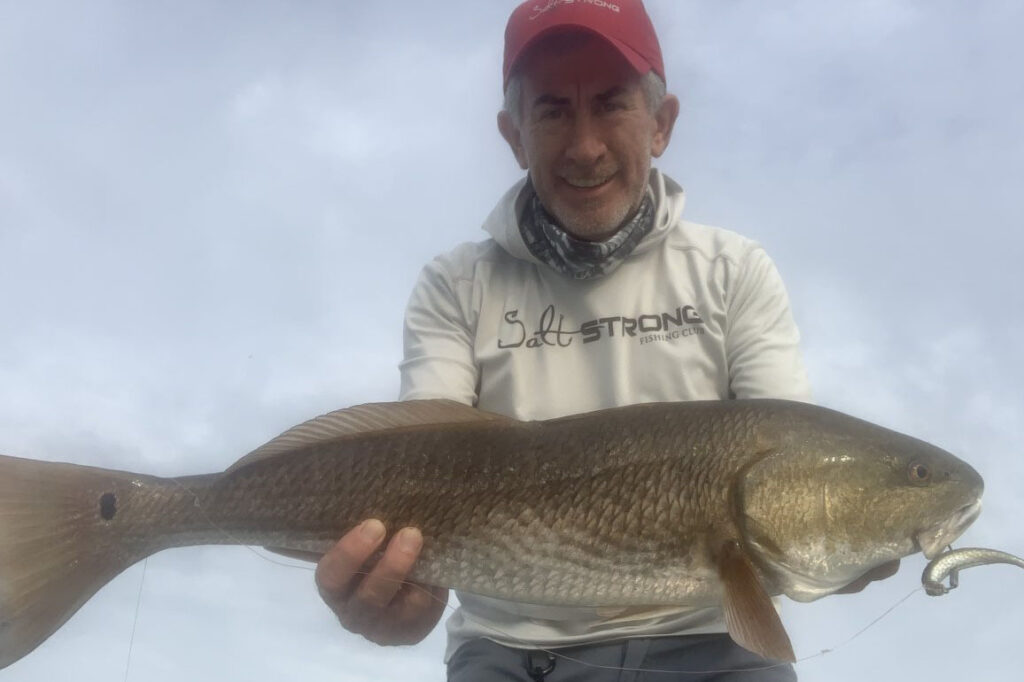
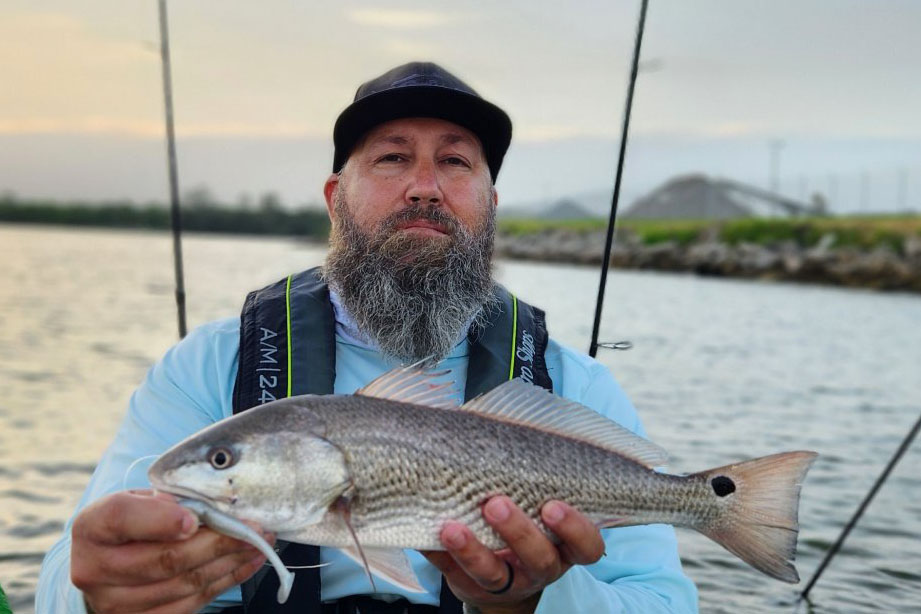
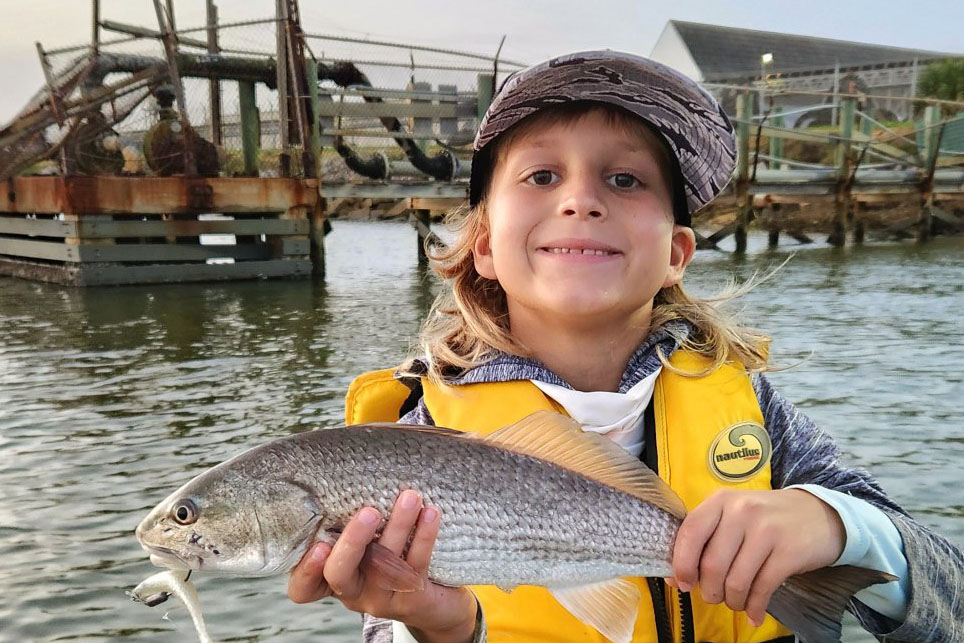
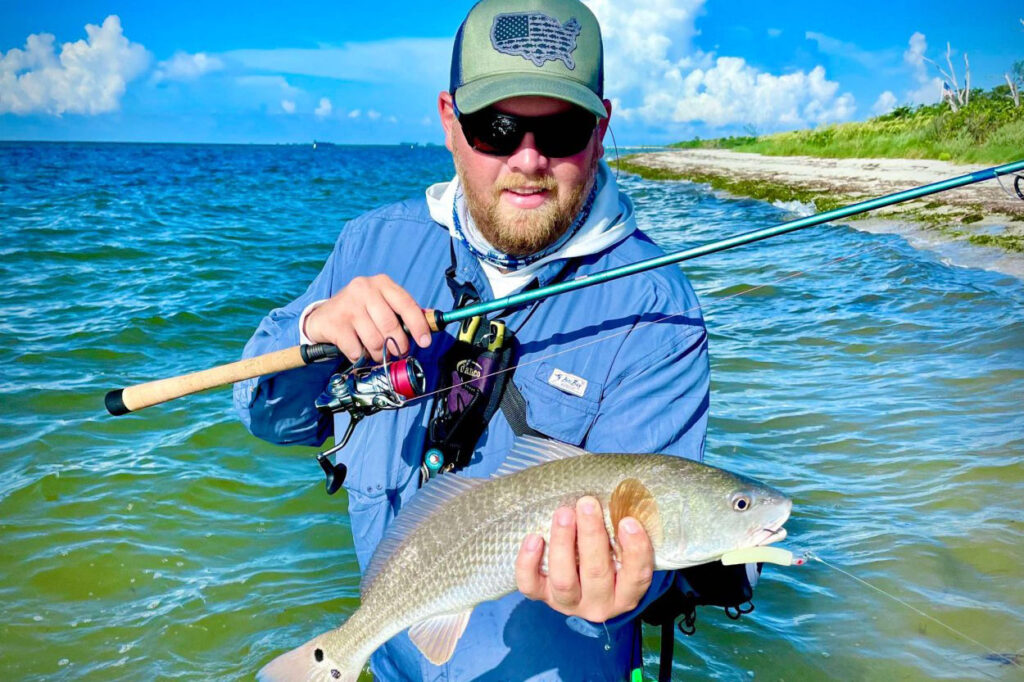
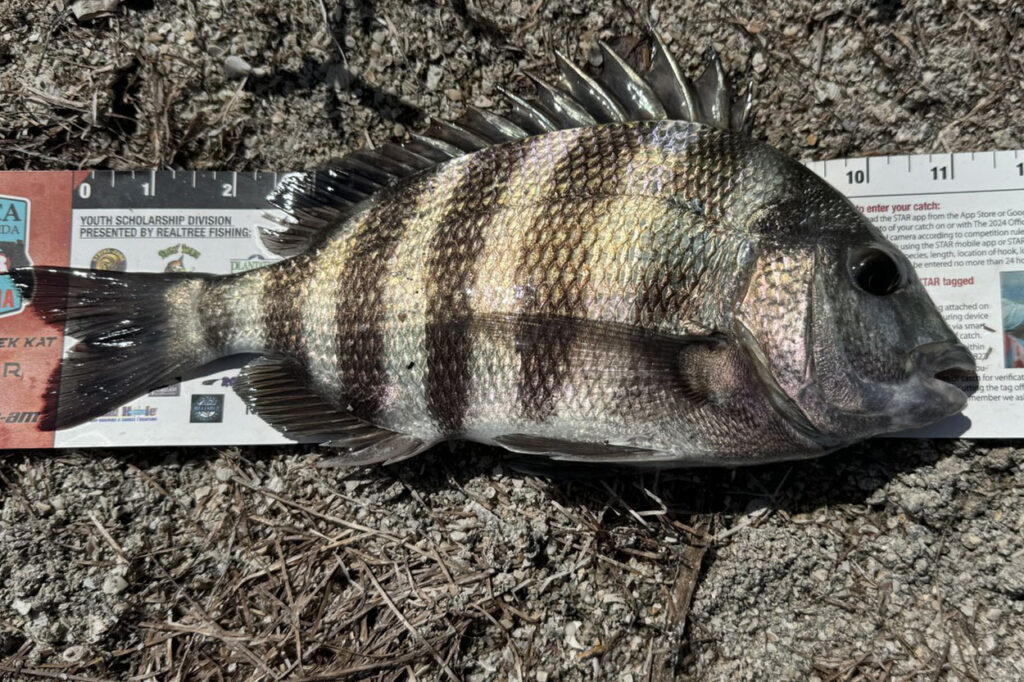
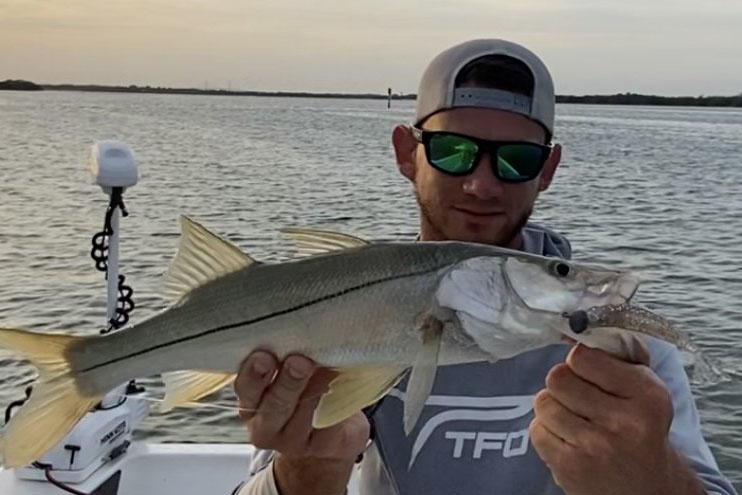
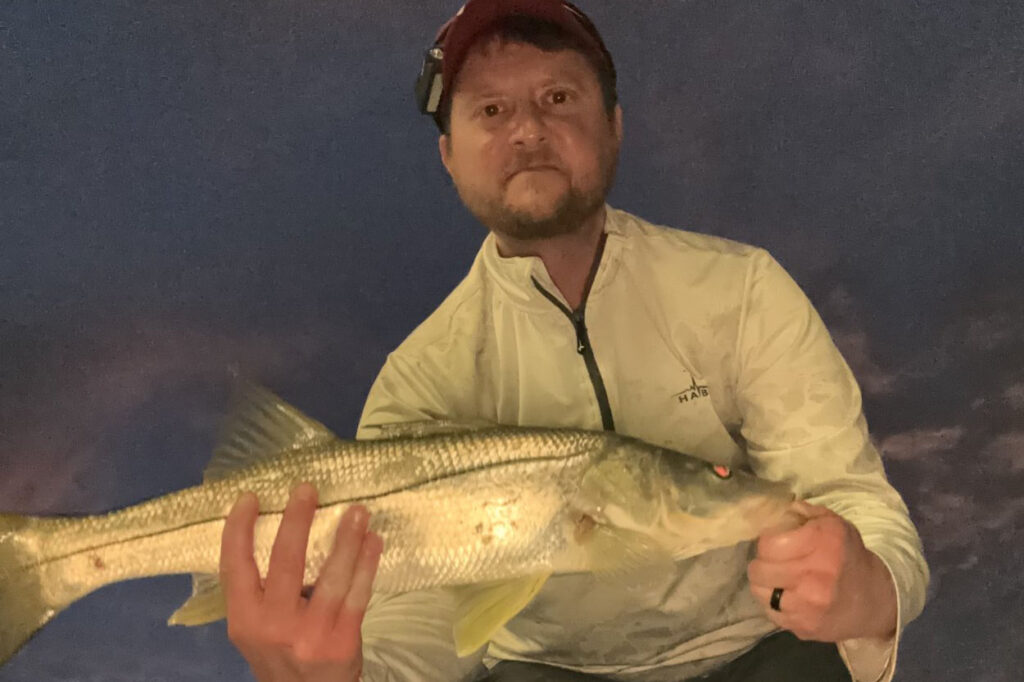
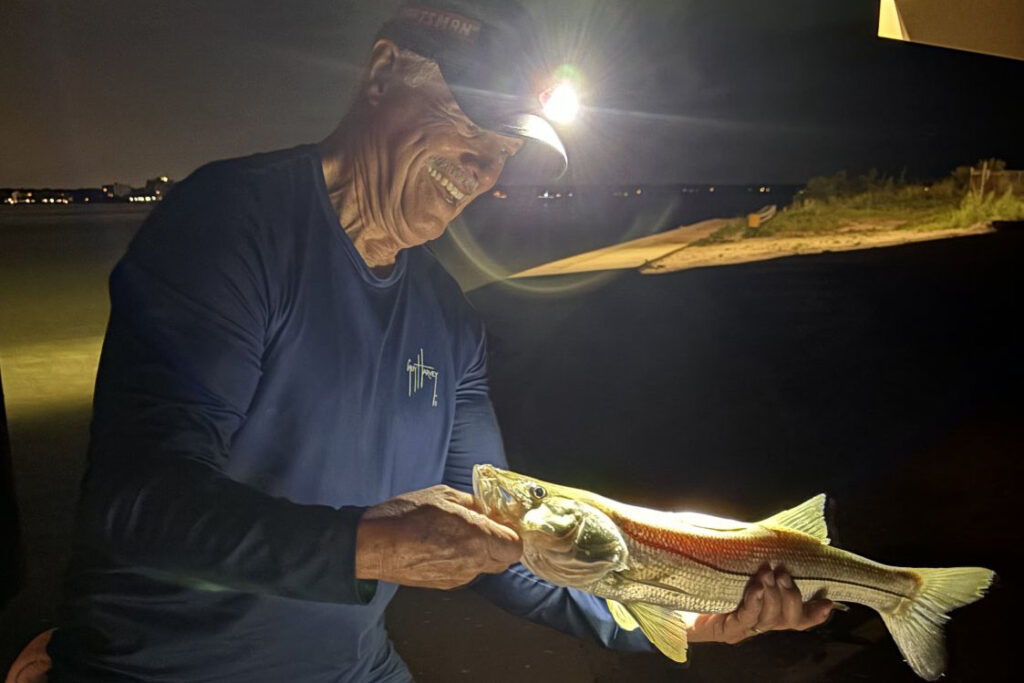
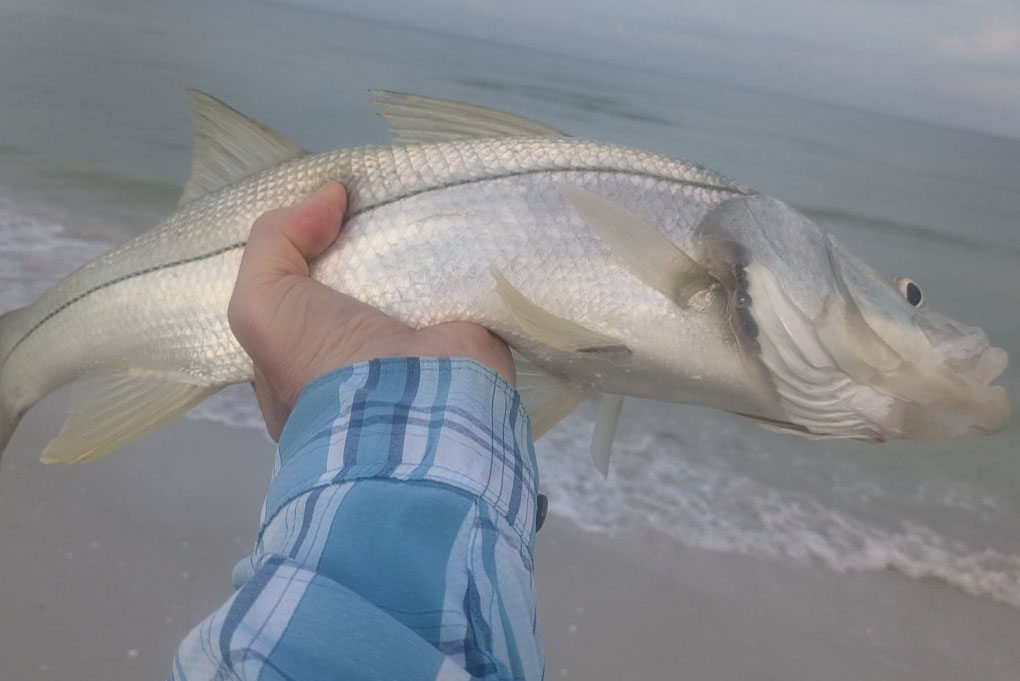
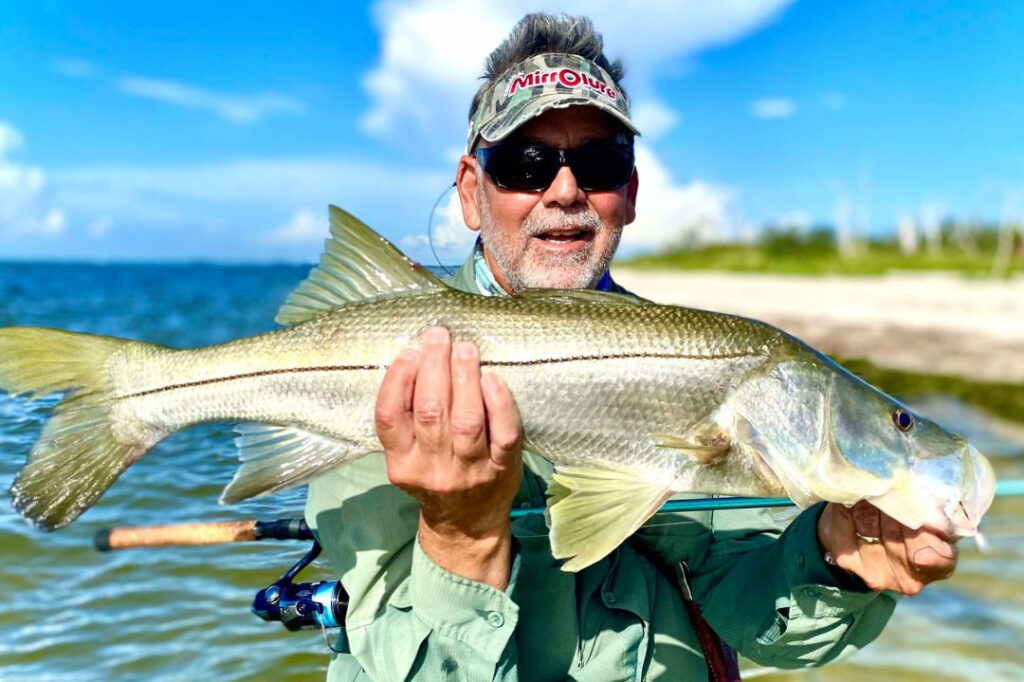
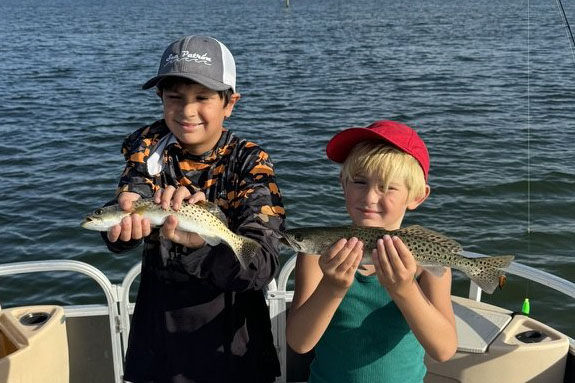
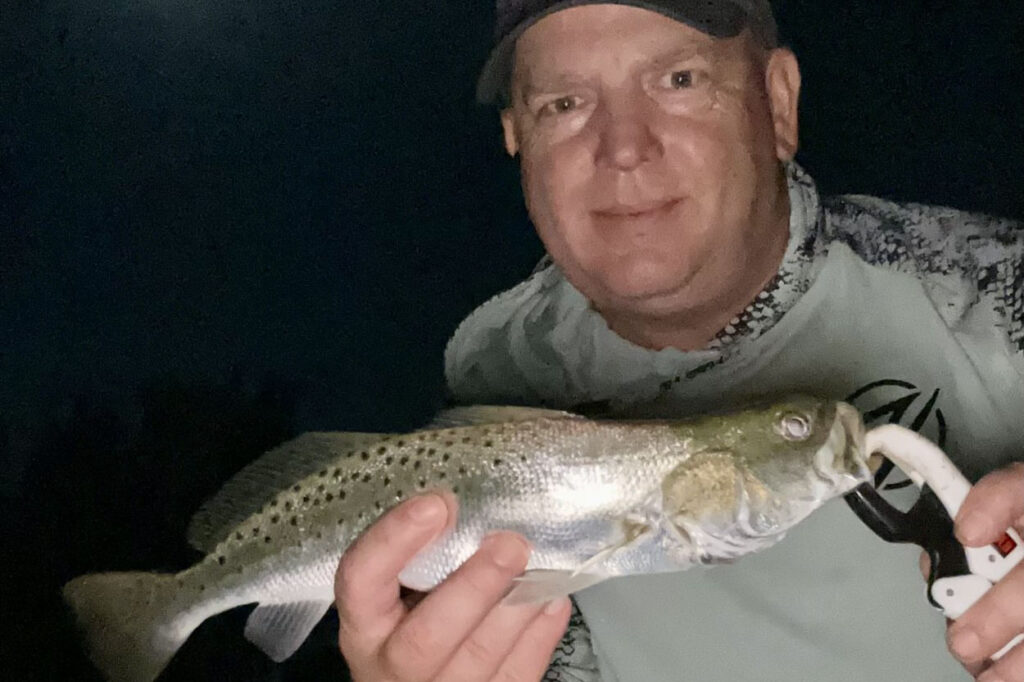
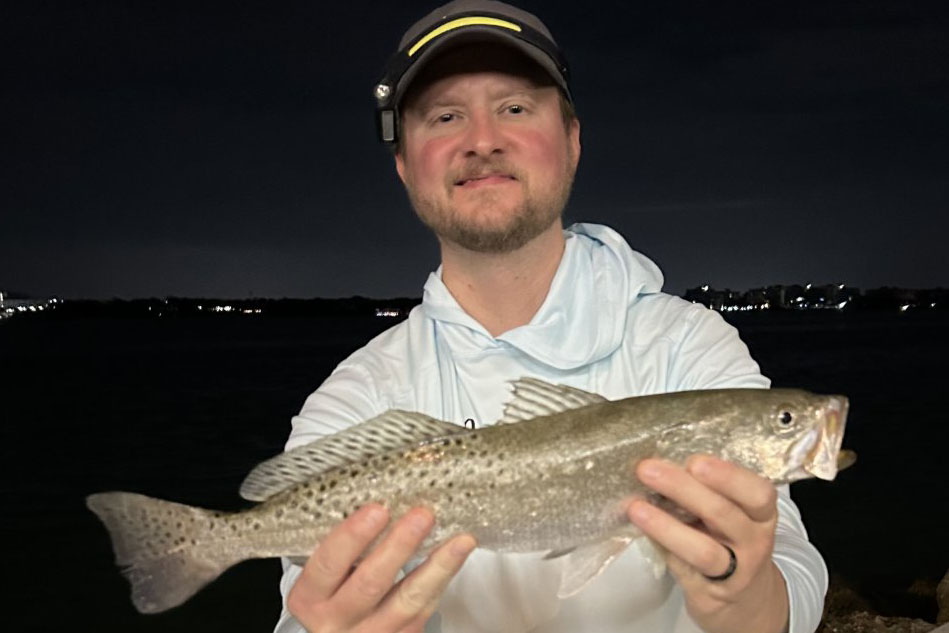
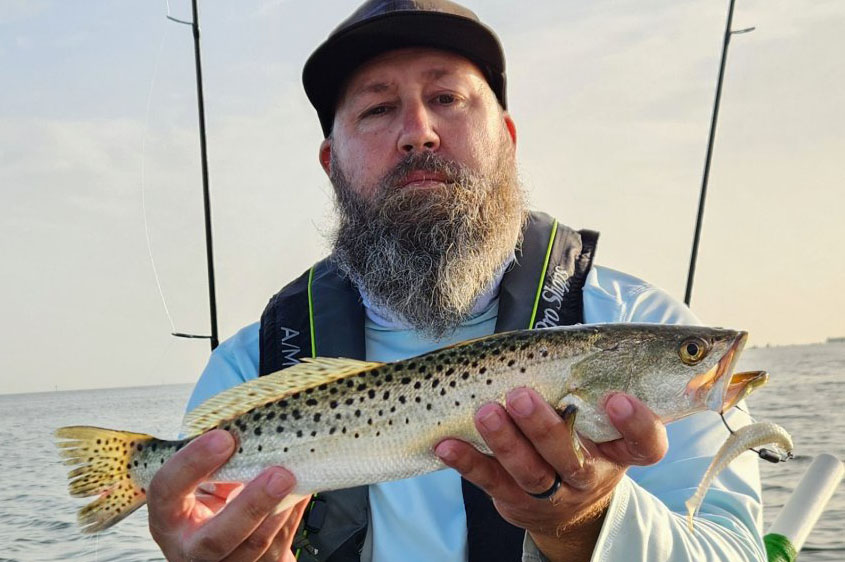
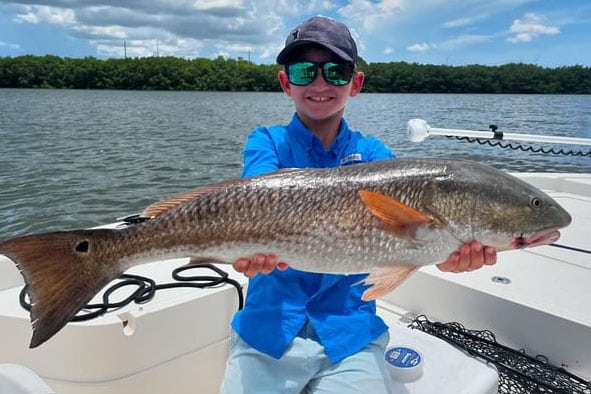
Snook are active early in the morning around bridges, passes, and dock lines. As the day progresses, they move to the beaches and deeper, shaded shorelines or dock lines to stay cooler. During the day, they prefer dead bait, while at night, they chase smaller fry baits, making it challenging to use artificials. For the best results, focus on cooler areas and use dead bait during the hotter parts of the day.
Redfish action is thriving at night around dock lights and bridge lights. During the day, they are found around schools of mullet on the flats, oyster bars, mangrove shorelines, and residential dock lines. Target areas with large mullet schools to find redfish. Big chunks of dead bait like cut mullet, ladyfish, pinfish, or threadfins are highly effective.
Mangrove snapper fishing is on fire around various structures. Seawalls, docks, piers, bridges, jetties, and rock piles are all holding plentiful mangrove snapper. They are aggressive and respond well to lighter tackle with small chunks of white bait or shrimp. Some larger specimens up to 18-20 inches are being caught around deeper, larger structures.
Trout are biting well on the edges, holes, and deeper flats. Due to the warmer water temperatures during the day, focus on areas with cooler water. Trout are also active around dock lights and bridge lights at night, providing excellent fishing opportunities.
Black drum are prolific around bridges, with smaller to medium-sized fish found around the flats. They prefer big dead baits like live shrimp or crabs, offering a thrilling inshore experience.
Tarpon action has slowed down but they are still present around local bridges, the mouth of the bay, and on the beaches. Although less prolific, they face less fishing pressure, making them a rewarding target for persistent anglers.
Sharks are abundant in virtually any area with moving water. Using big, stinky dead baits soaked on the bottom will yield successful results.
Fishing Tips
- Snook: Use live baits like greenbacks, threadfins, and shrimp, or try flair hawks and soft plastics at night.
- Redfish: Look for them around mangroves, oyster bars, and flats, and use dead baits during higher tides.
- Trout: Target them with soft plastics, white bait, and shrimp around deeper flats and potholes.
- Tarpon: Target them during the full moon with crab flushes, making it an ideal time to target them.
- Flounder: Find them near sandy bottoms and structures, biting on bottom baits.
- Pompano: Be prepared to move frequently to stay on their bite.
- Sharks: Use big dead baits in areas with moving water.
Help spread the word about what to do if you hook or entangle a bird. Never cut the line; instead, reel in the bird carefully to dehook and release it. If you accidentally hook a dock, break the line at the hook to avoid leaving any line in the water. Seabirds with fishing lines hanging from them are becoming more common, and this could lead to the closure of fishing areas.
Rising concerns about bird entanglements might result in closing fishing spots, impacting the few available locations around Tampa Bay from shorelines, docks, bridges, or piers. Learn more in our recent podcast with Salt Strong: https://www.saltstrong.com/articles/shutting-down-fishing-at-busy-pier/.
Nearshore Fishing Report
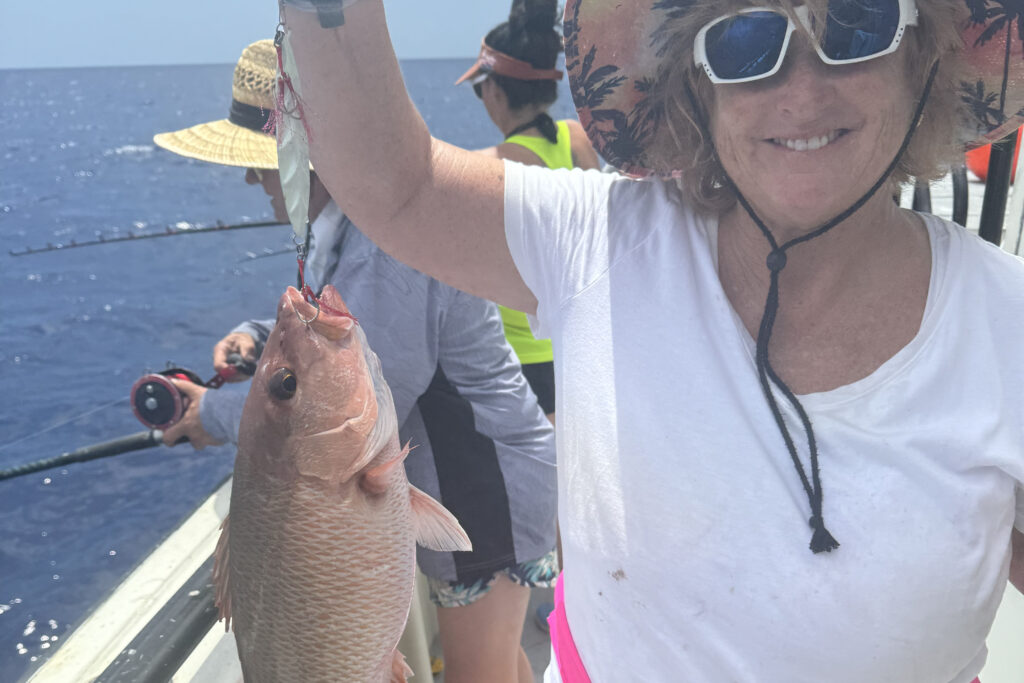
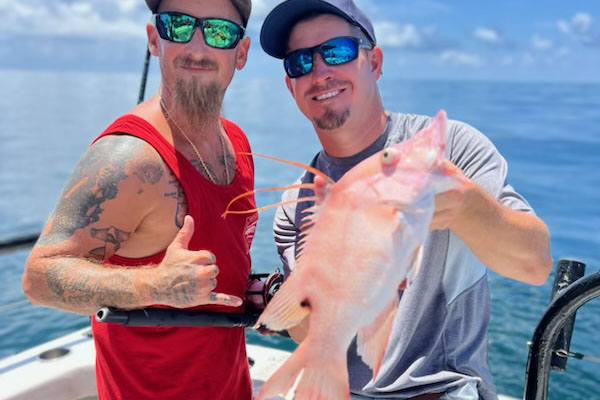
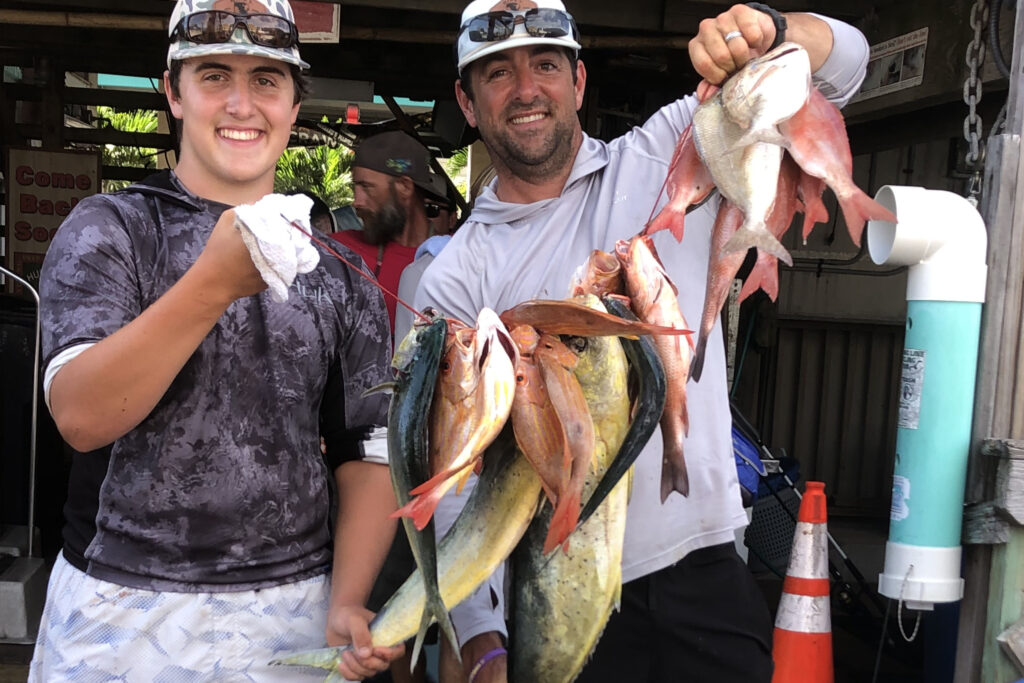
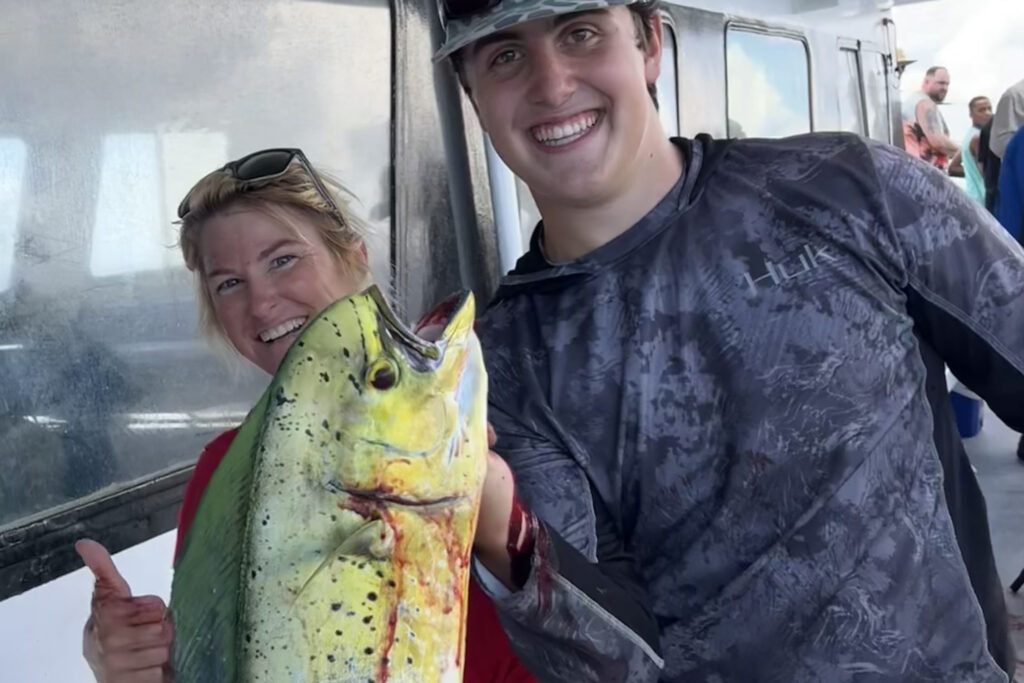
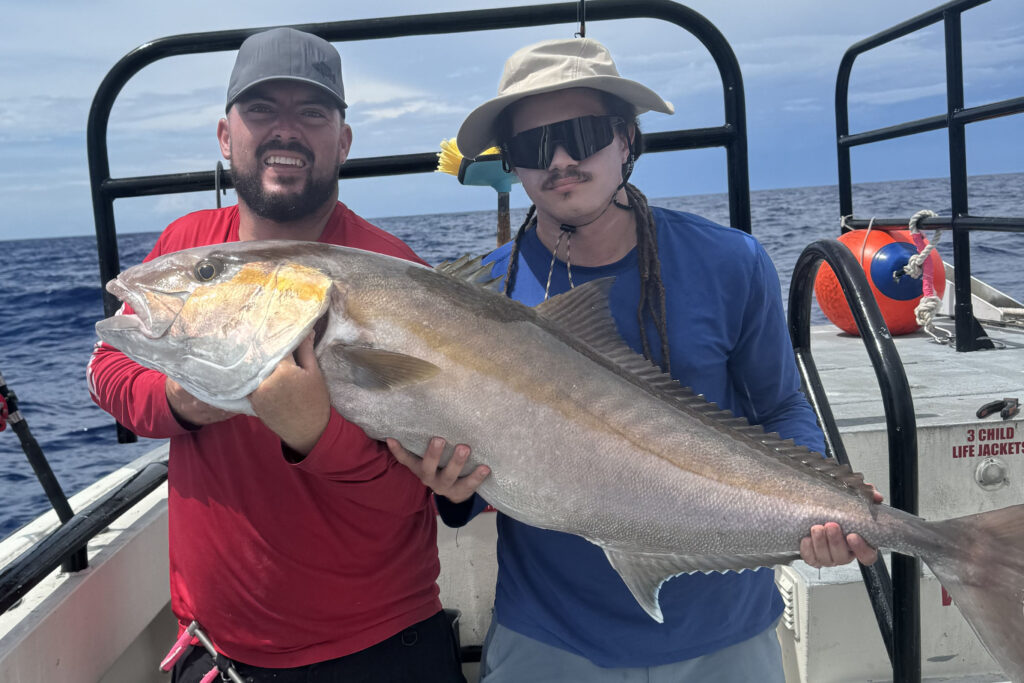
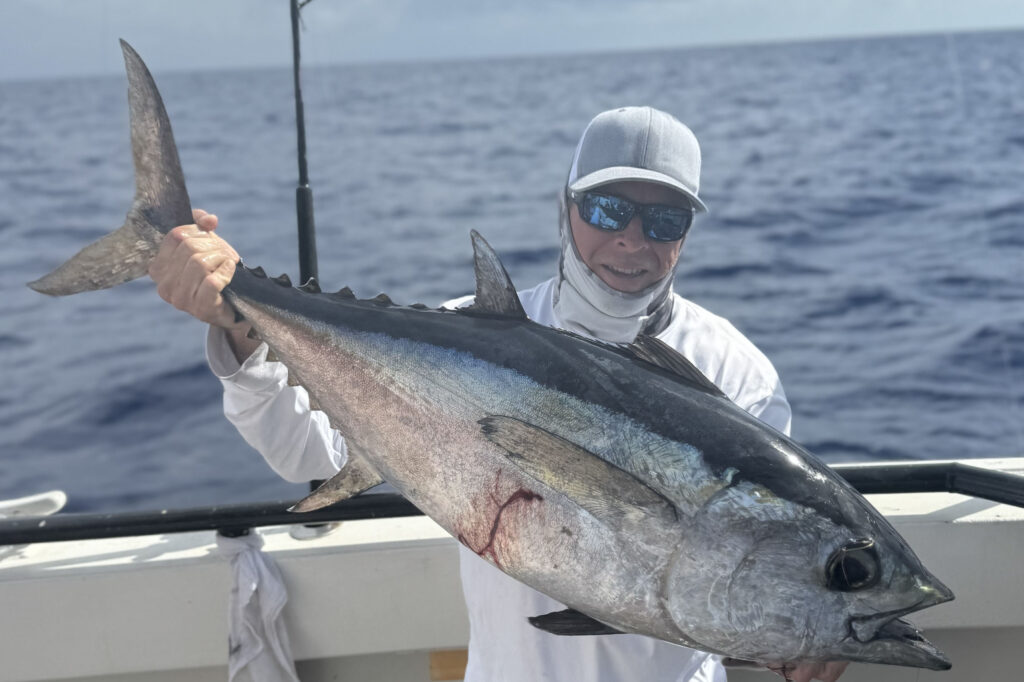
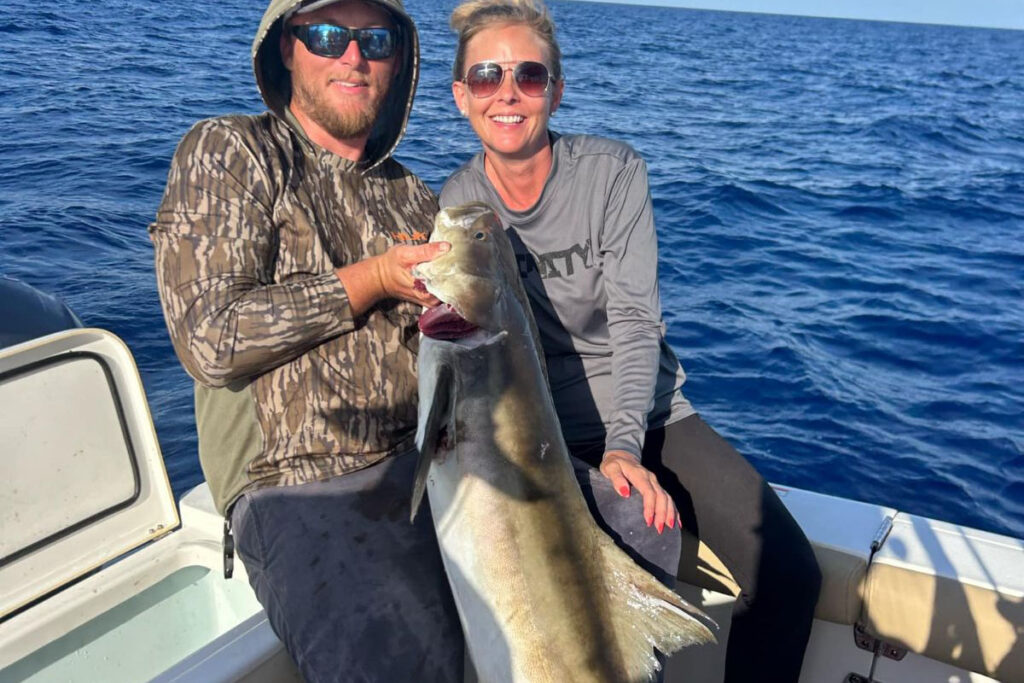
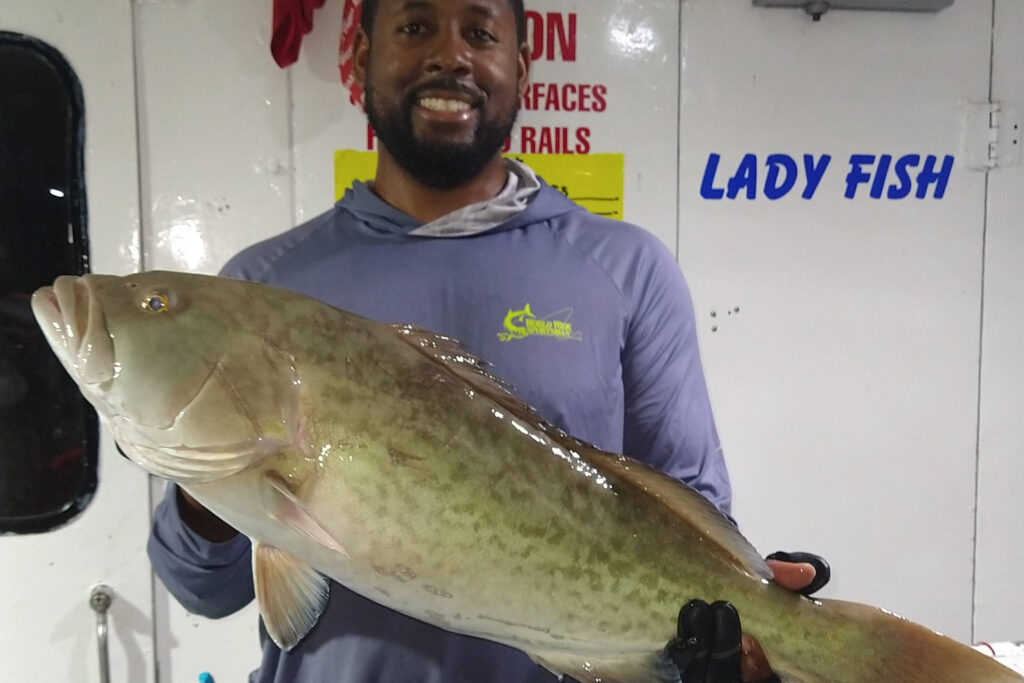
Lane snapper are starting around 40-60 feet of water and are being caught on our ten-hour all-day and five-hour half-day trips. They prefer cut squid but will also take cut threadfins or live shrimp. Larger lanes are more attracted to cut threadfins or bigger shrimp. Be aware that live shrimp supplies are limited and often small this time of year, which is typical starting around early July until around early September. Lanes are great eating and have been the main target on the ten hour all day trips lately
Mangrove snapper near shore are biting on cut threadfin and live shrimp. Larger mangroves can be caught using small to medium pinfish. They are most commonly found in deeper near shore waters and are particularly active on our ten hour all day trips, but you do have a chance on the half days but its much lower.
Red grouper season is closed as of the end of June and will reopen on January 1st. Meanwhile, we are focusing on lanes, mangroves, and other heads and tails near shore. You still have a chance for some hogfish too, but they bite best in cooler months typically.
Yellowtail snapper are occasionally caught on ten-hour trips, especially when fishing deeper near shore. They respond well to smaller strips of chewy baits like bonita strips or cut squid. However, we see quite a few on live shrimp too!
Fishing Tips
- Red Grouper: Target the deepest near shore waters with big dead baits or solid live baits. Use 60 lb test and 7/0 hooks for best results.
- Red Snapper: Use big dead baits like whole squid and bonita strips with heavy tackle to focus on larger fish. Prime trips include the 12-hour extreme, 39-hour, and 44-hour trips.
- Scamp Grouper: Use small to medium pinfish and cut threadfin, especially while targeting mangrove snapper.
- Mangrove Snapper: Near shore, use live shrimp and small chunks of threadfin on 30-40 lb test with 3-4/0 hooks. Offshore, use bigger chunks of cut threadfin or medium pinfish on 40-60 lb test with 5-7/0 hooks.
- Vermillion Snapper: Start around 100 feet of water using cut squid or threadfin. These fish are aggressive and not leader-shy.
- Yellowtail Snapper: Use shrimp, cut squid, and threadfin.
- Pelagic Species: Keep flat lines and pitch rods ready for sailfish, kingfish, wahoo, tuna, and mahi mahi.
Offshore Fishing Report
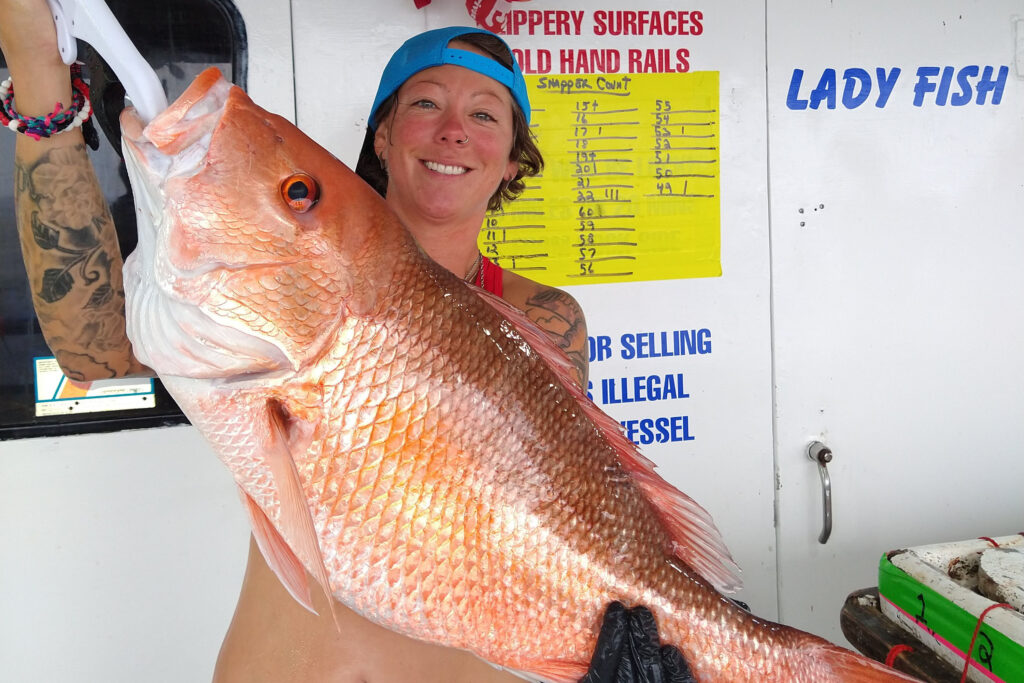
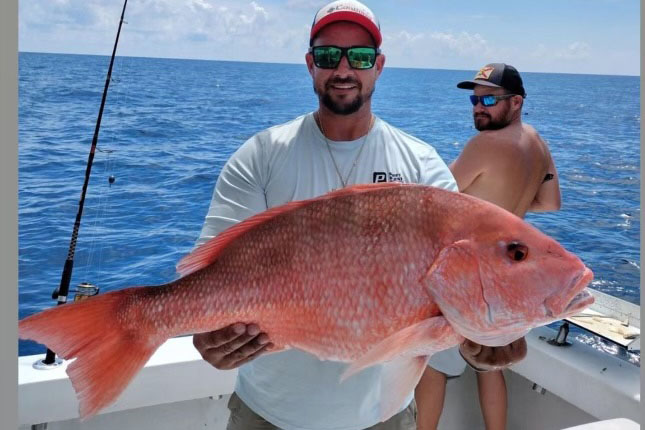
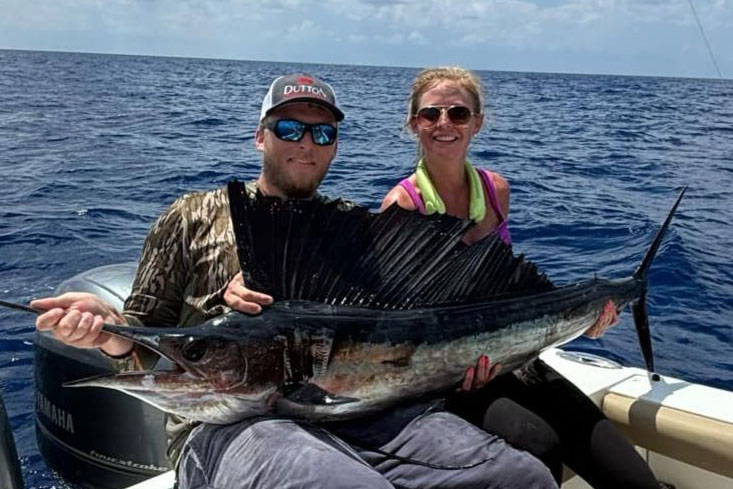
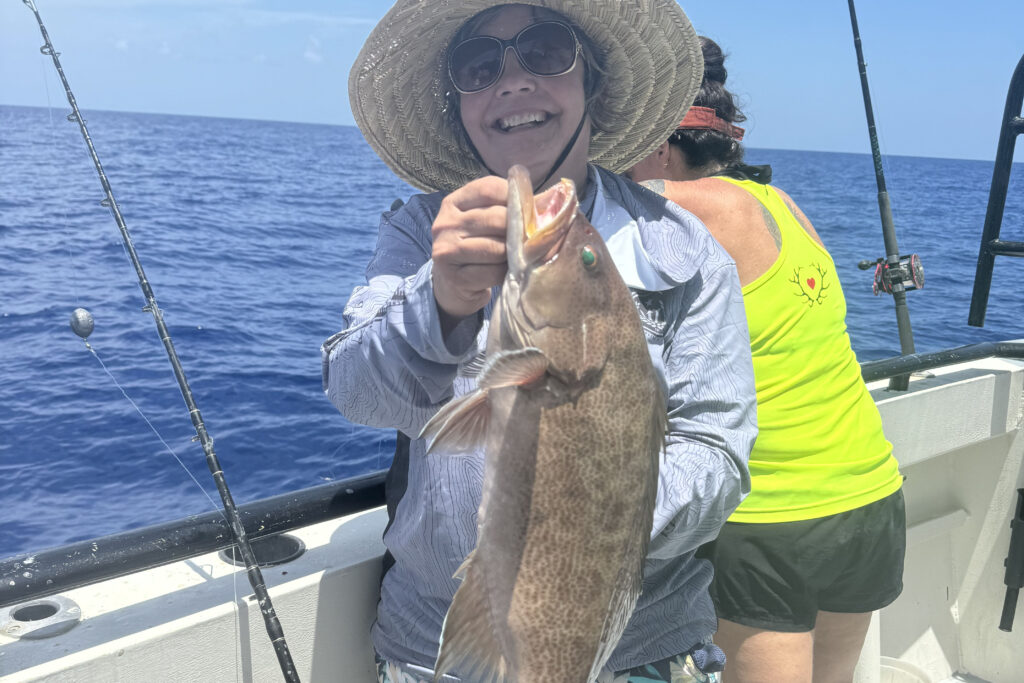
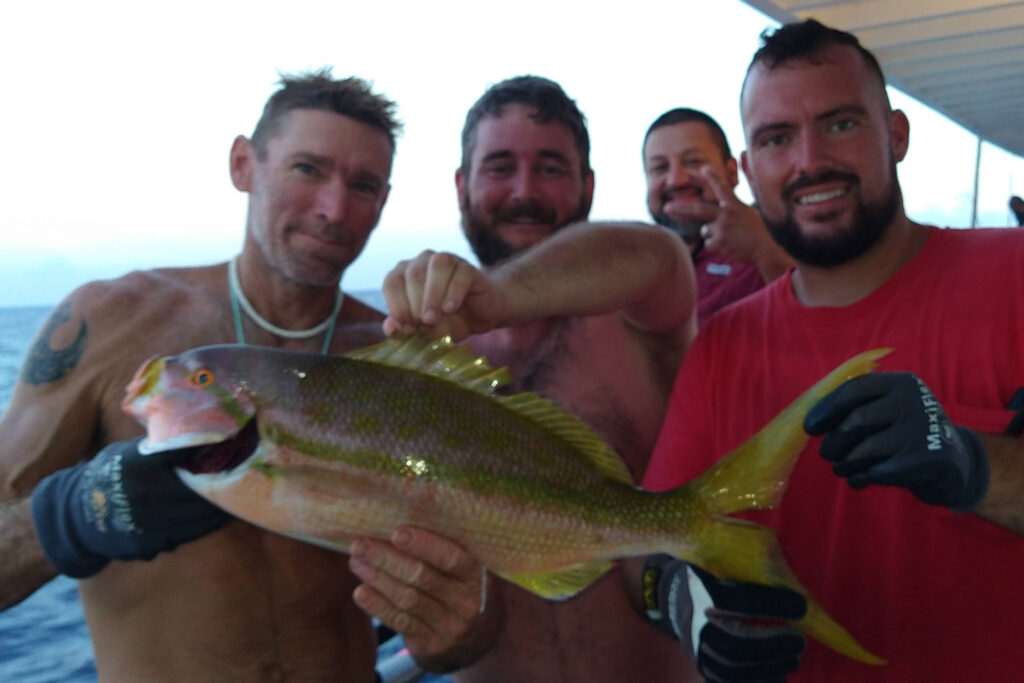
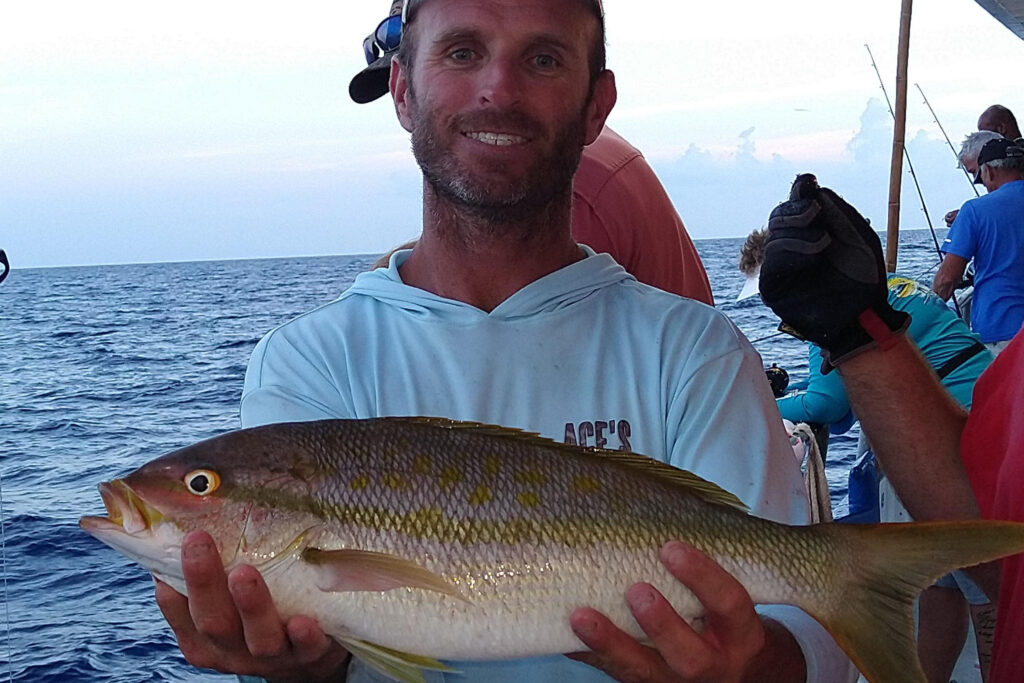
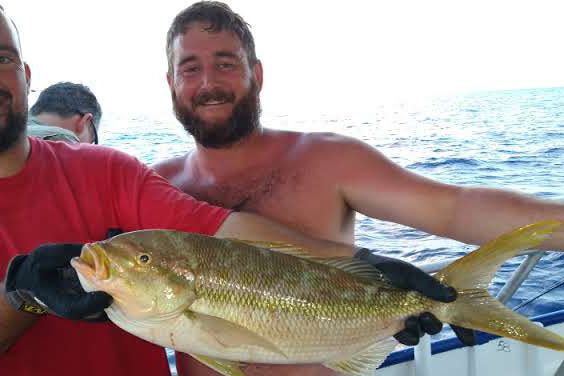
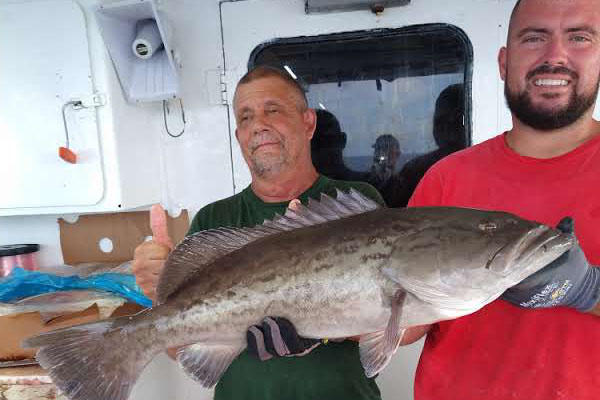
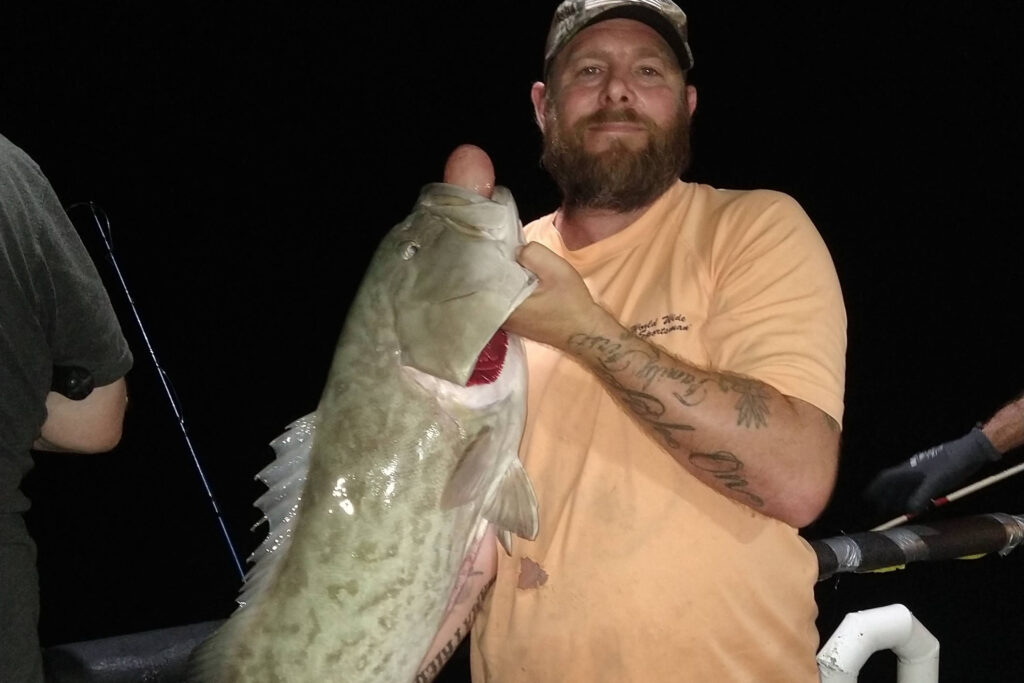
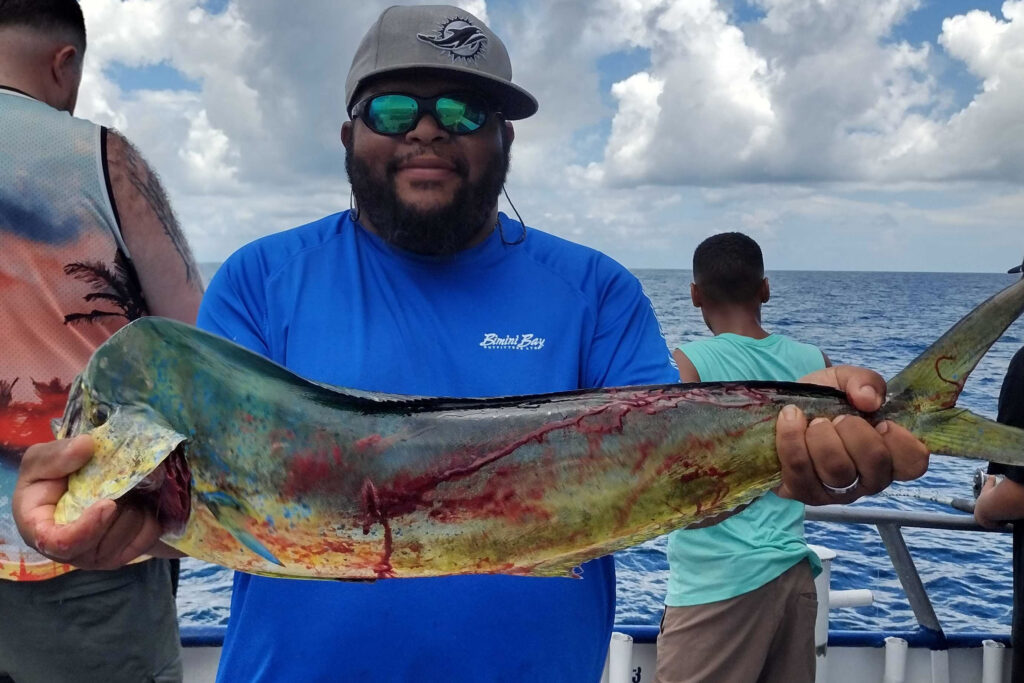
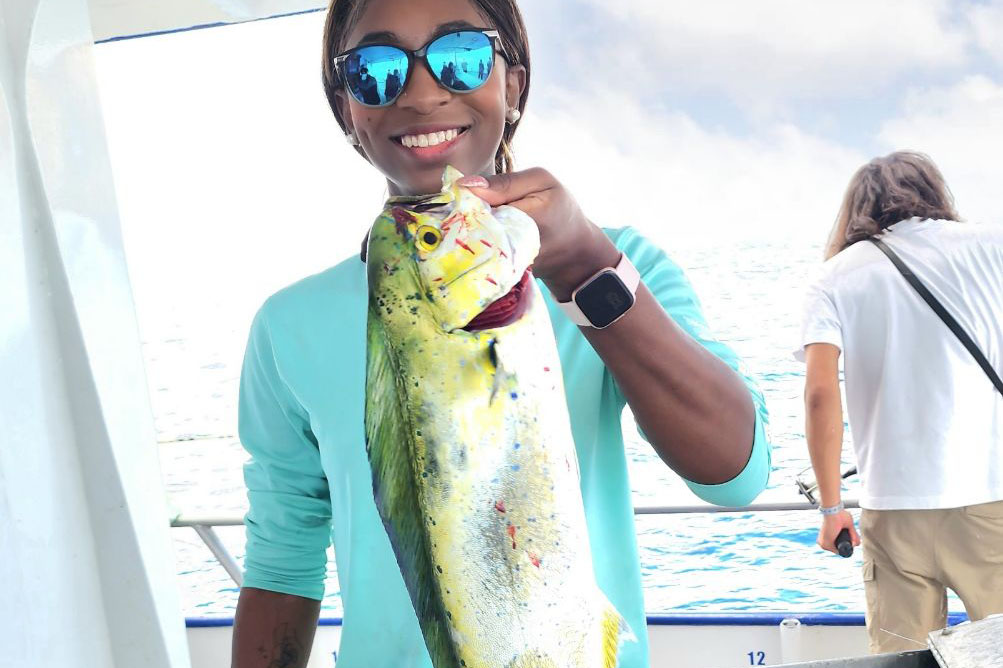
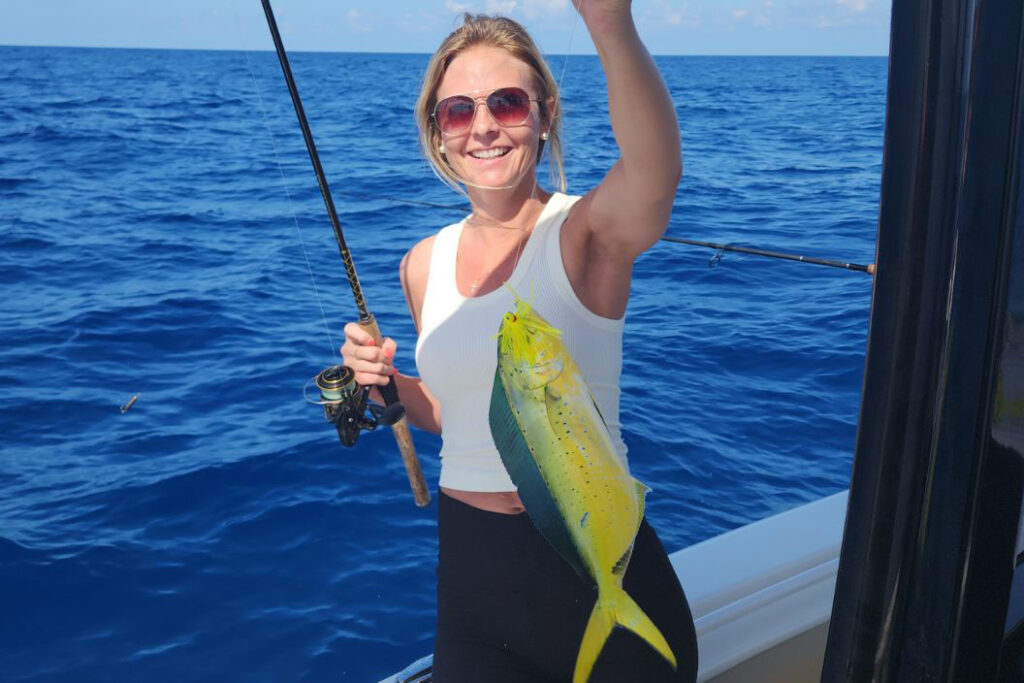
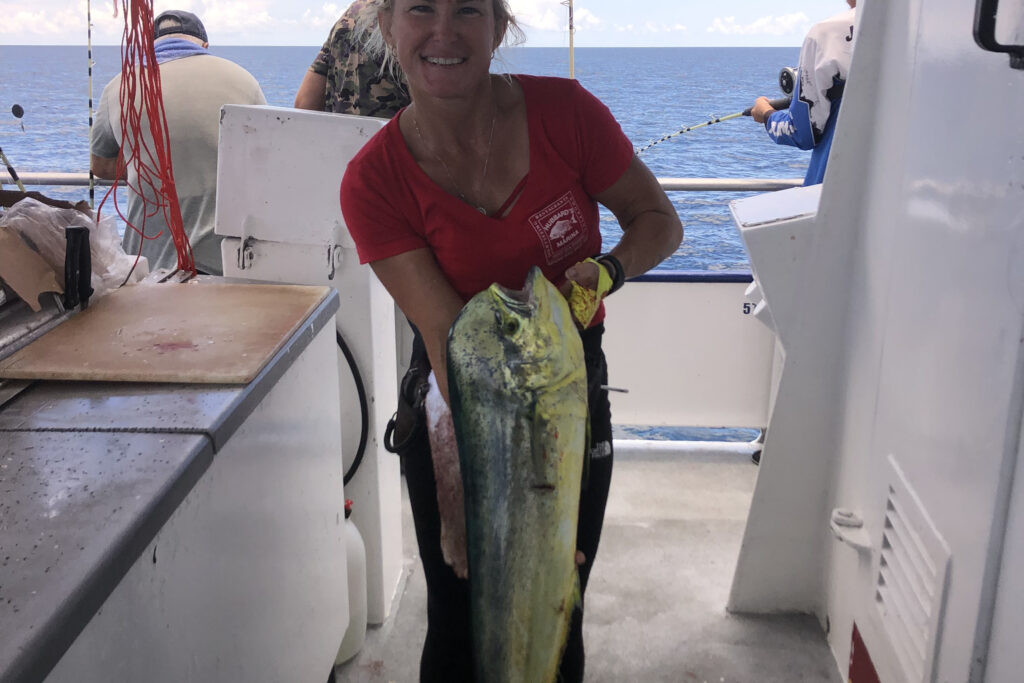
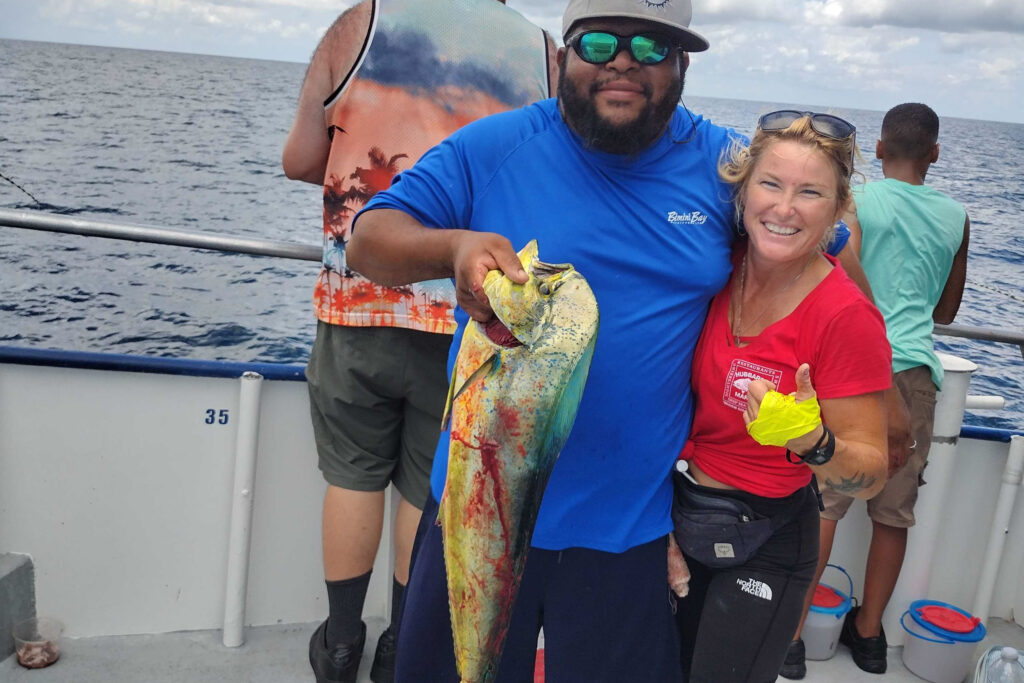
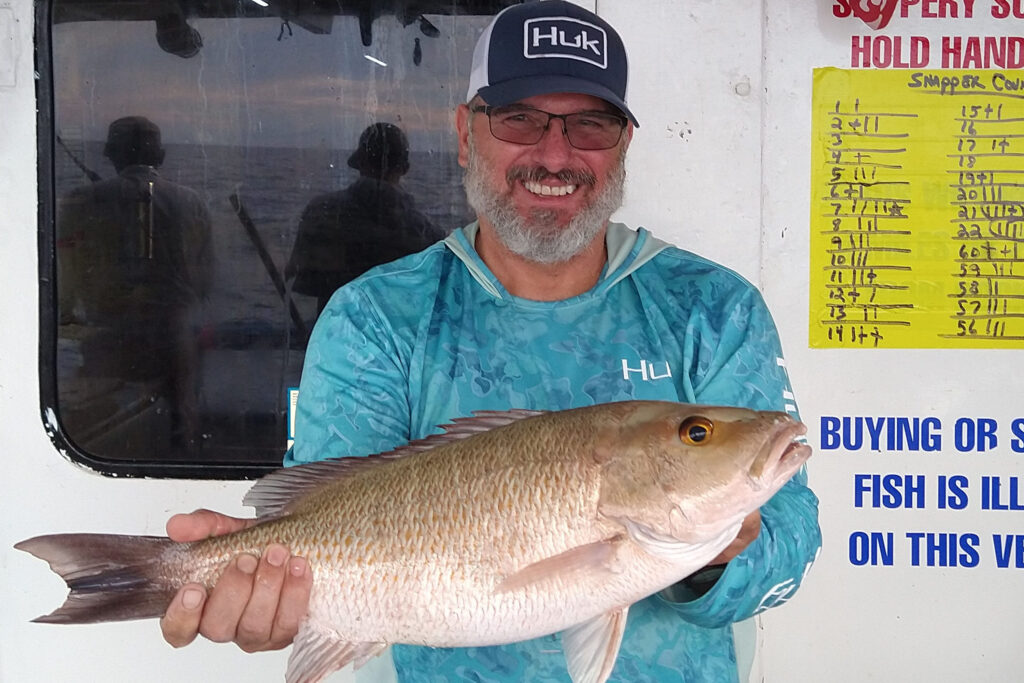
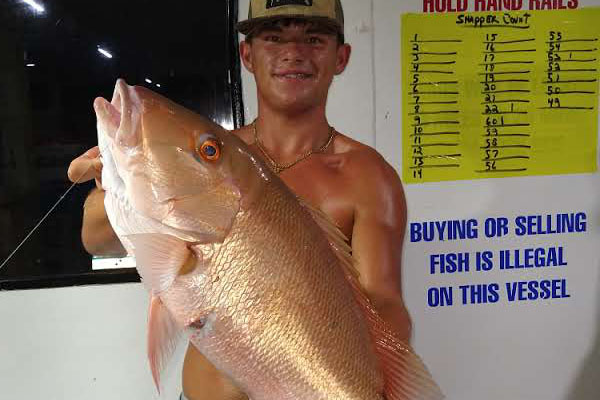
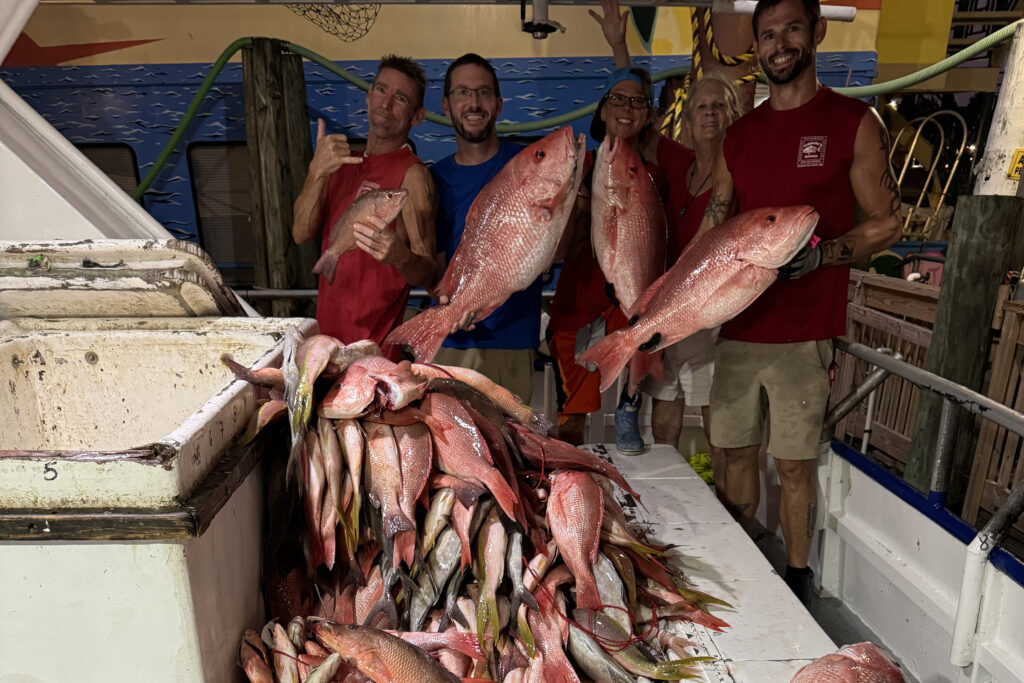
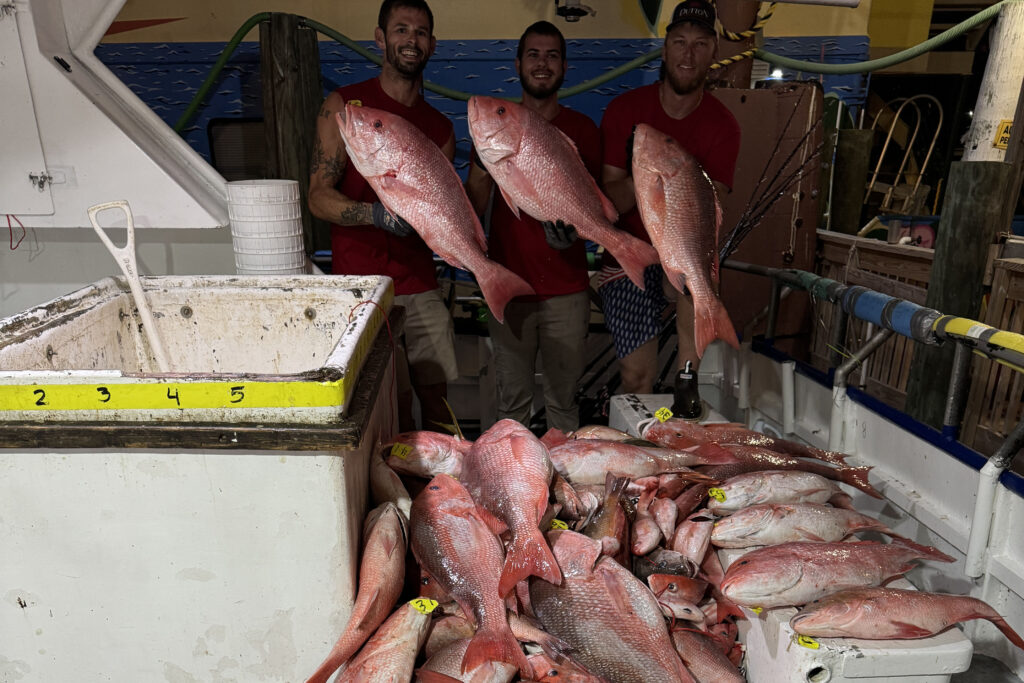
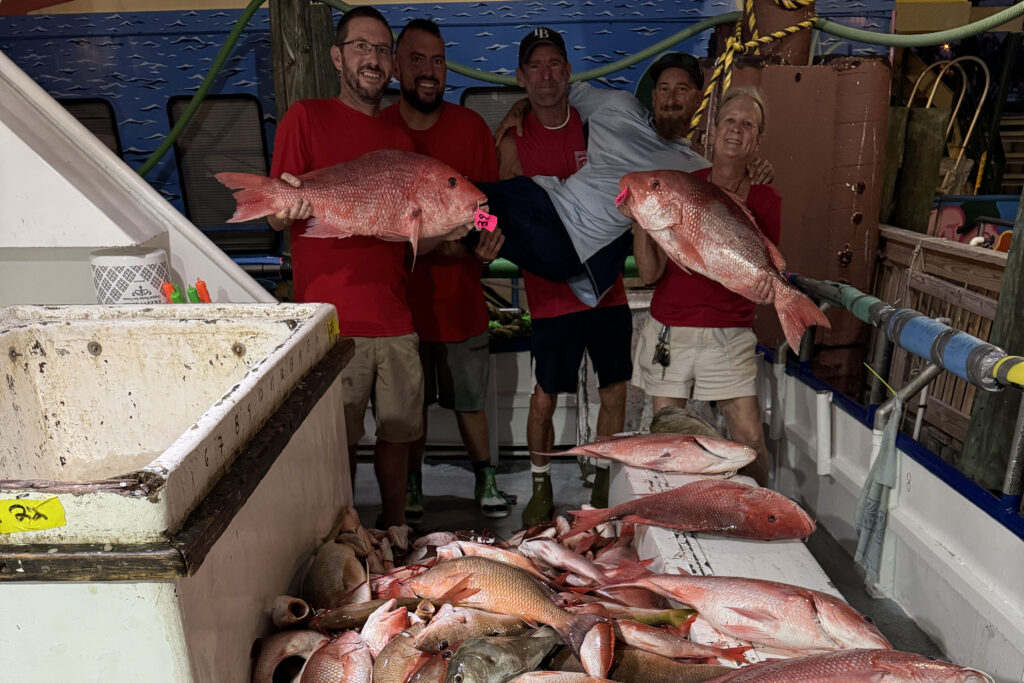
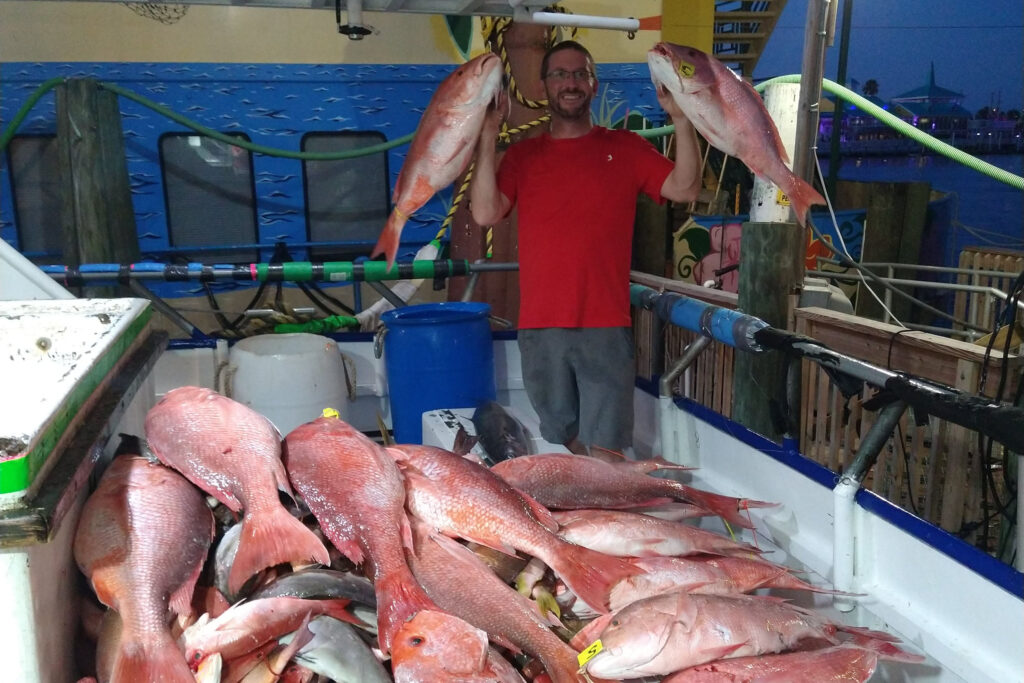
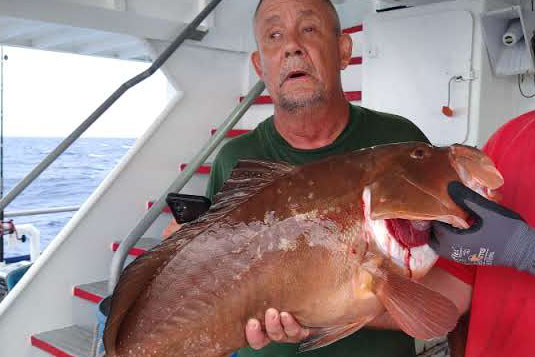
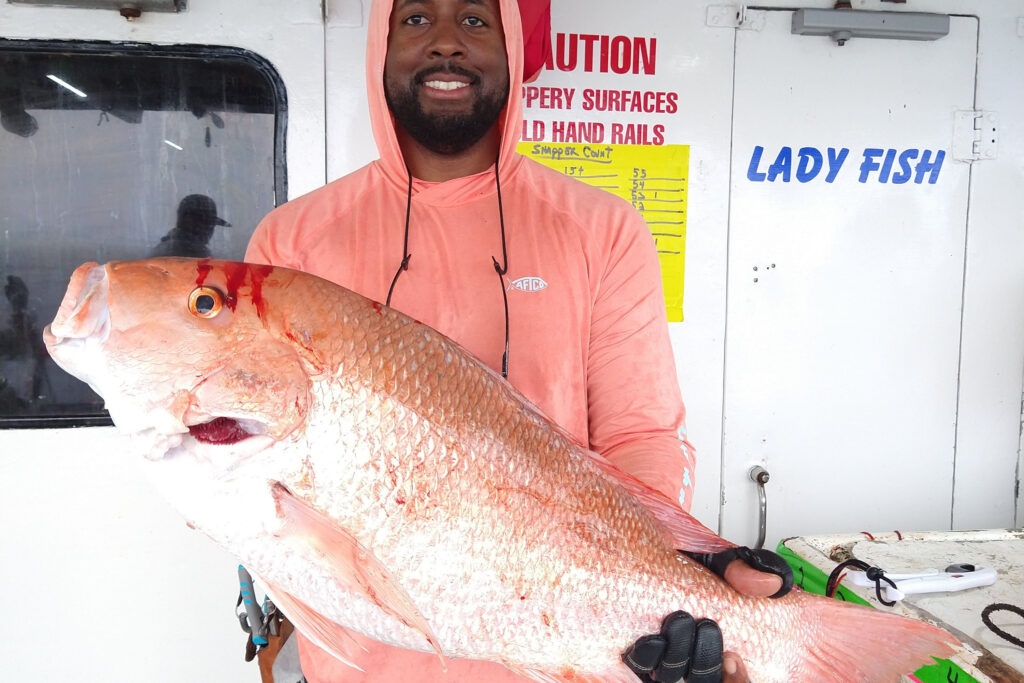
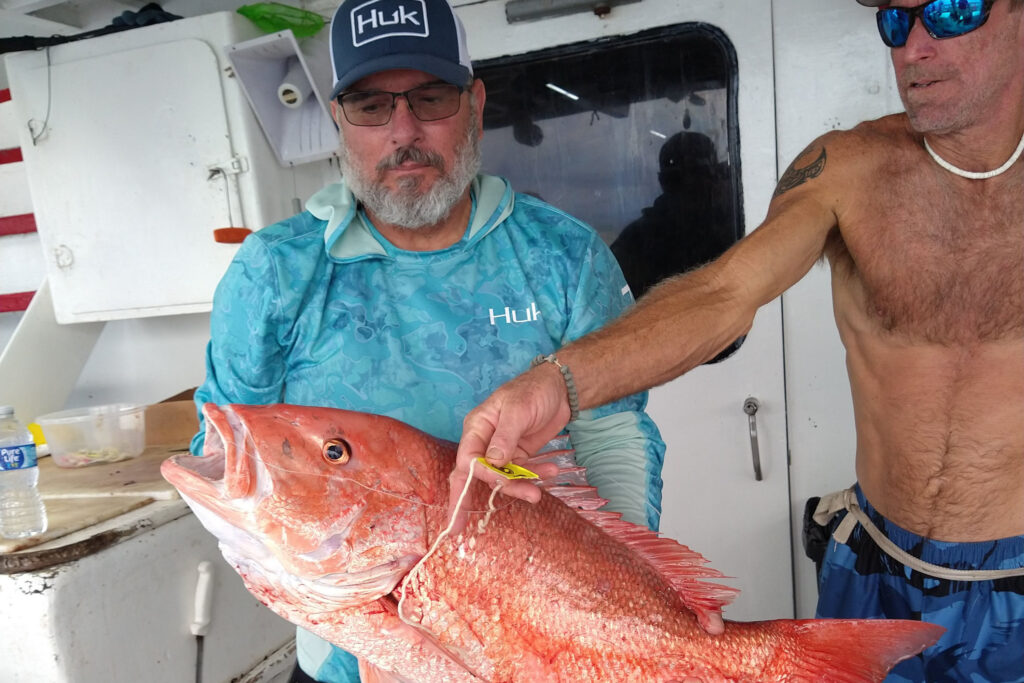
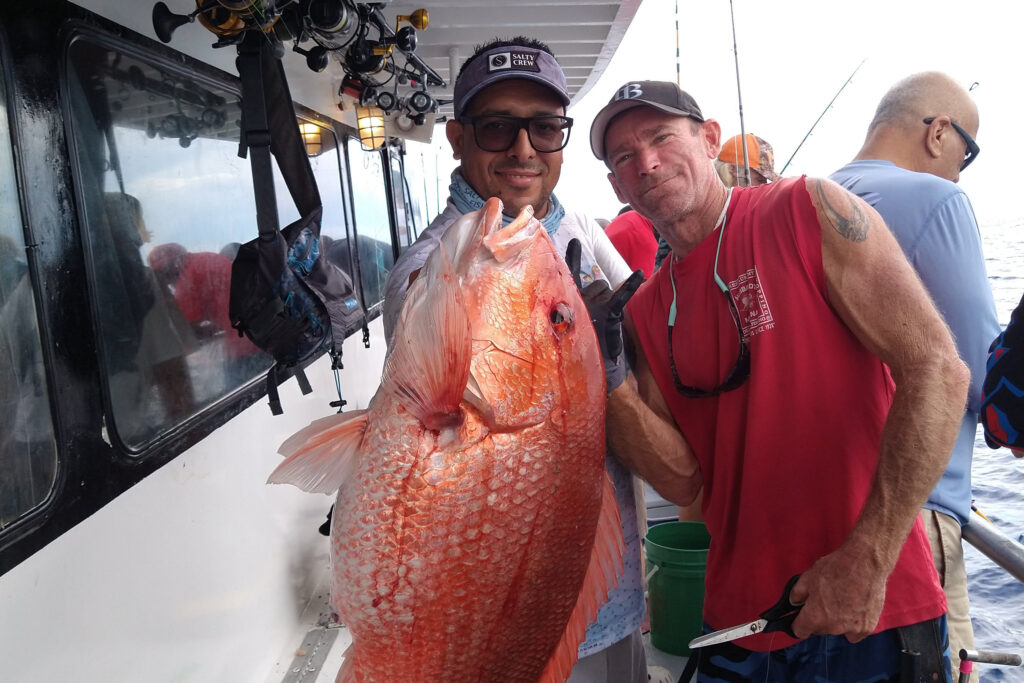
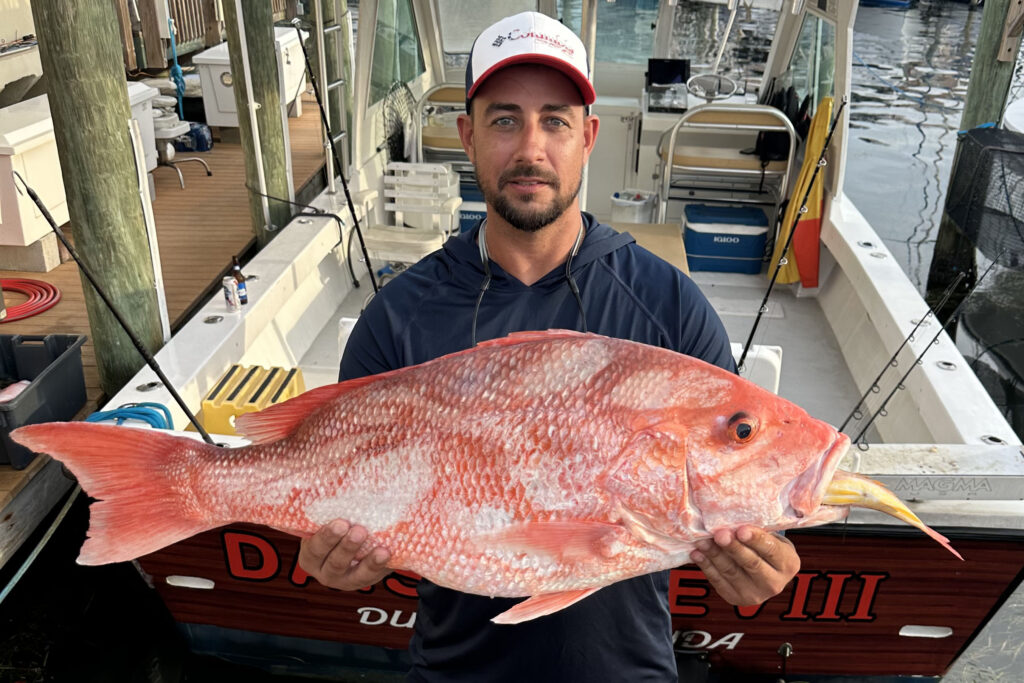
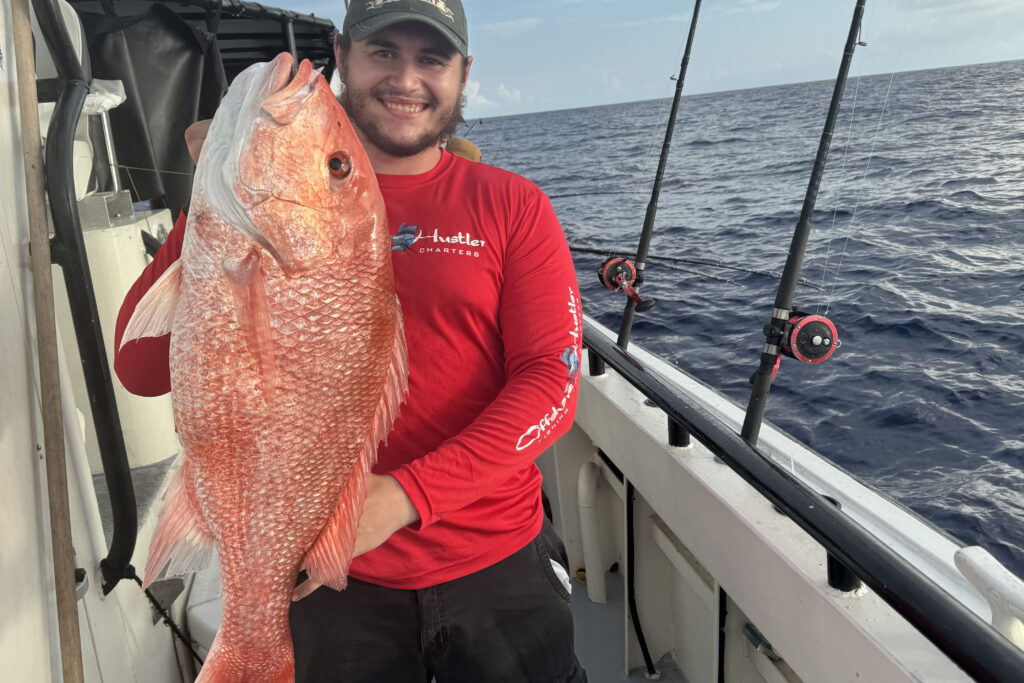
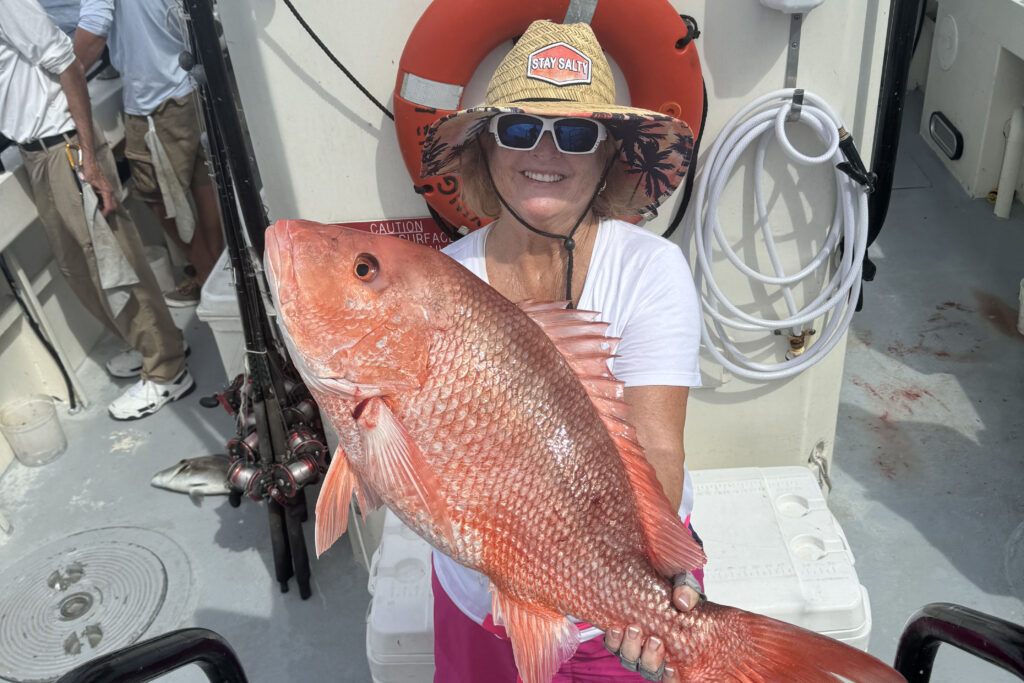
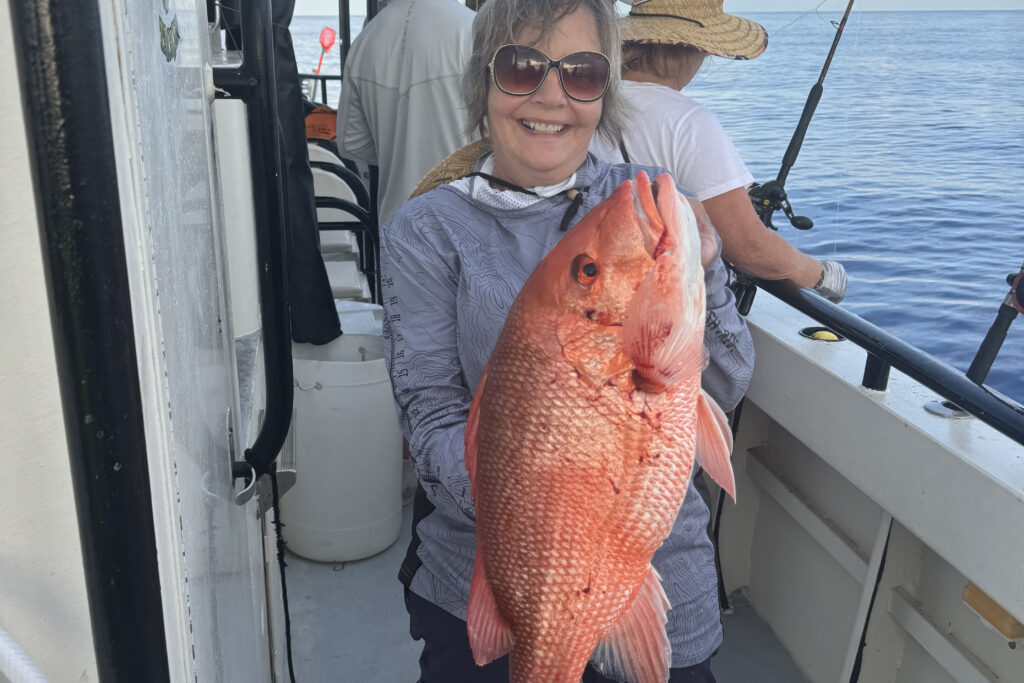
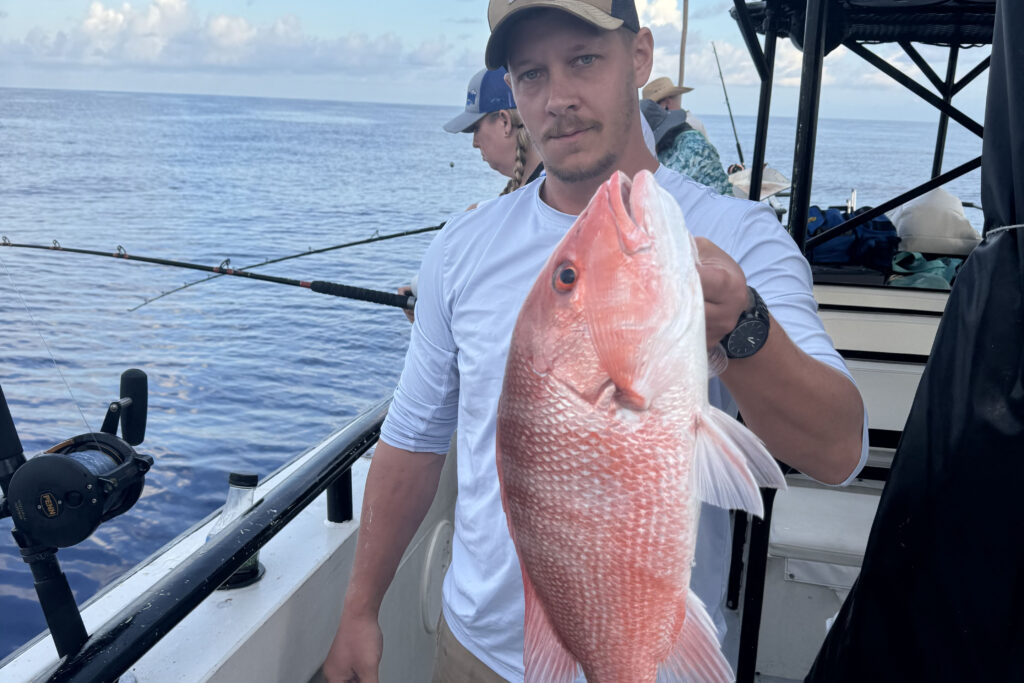
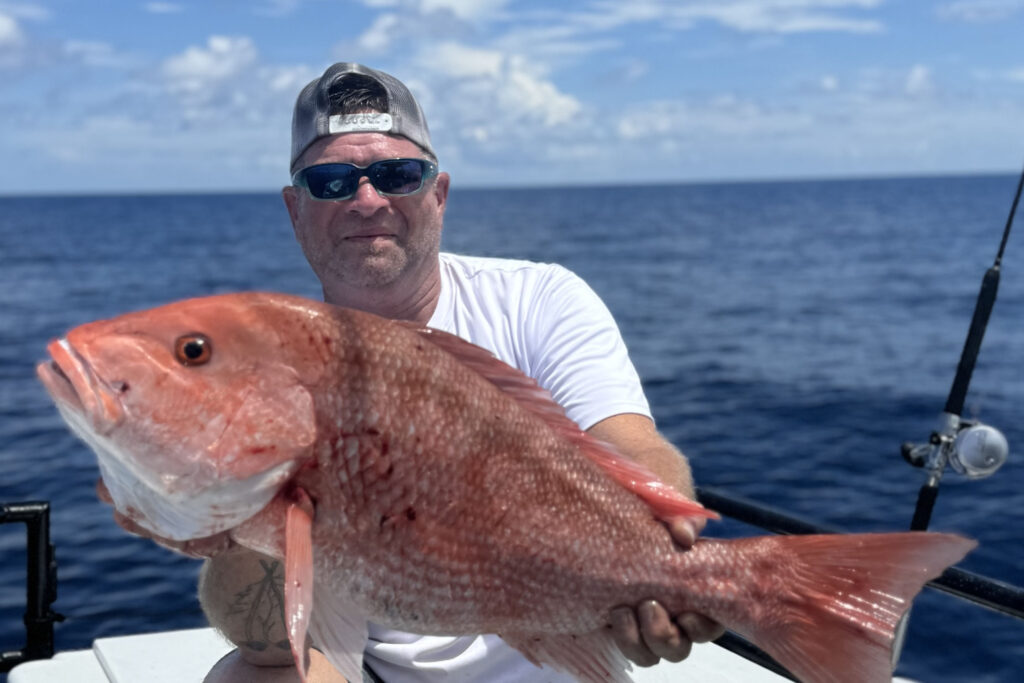
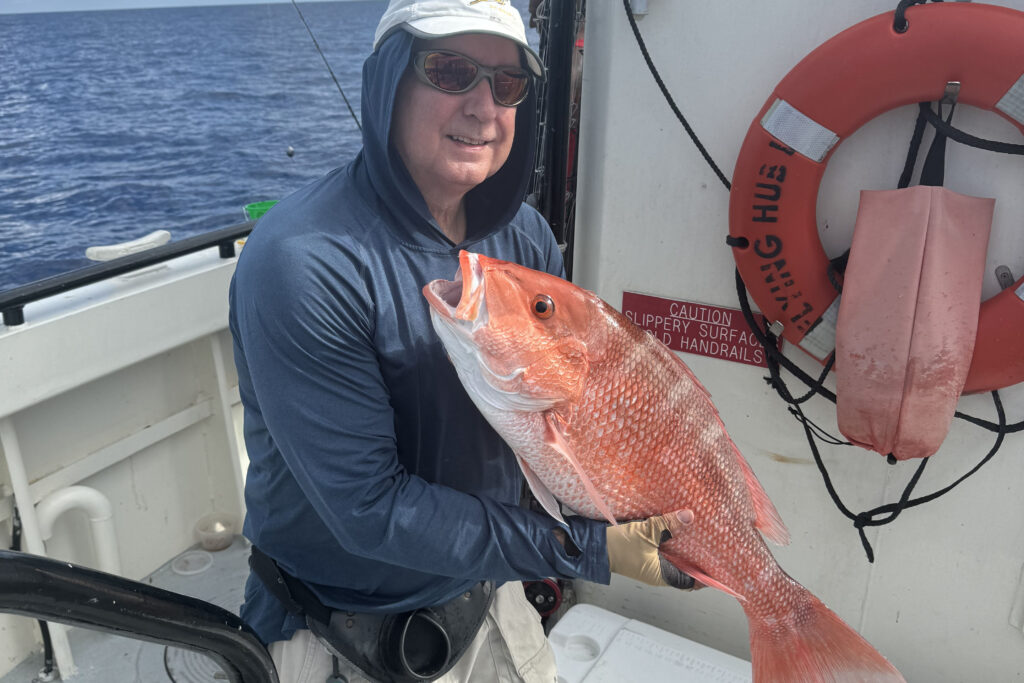
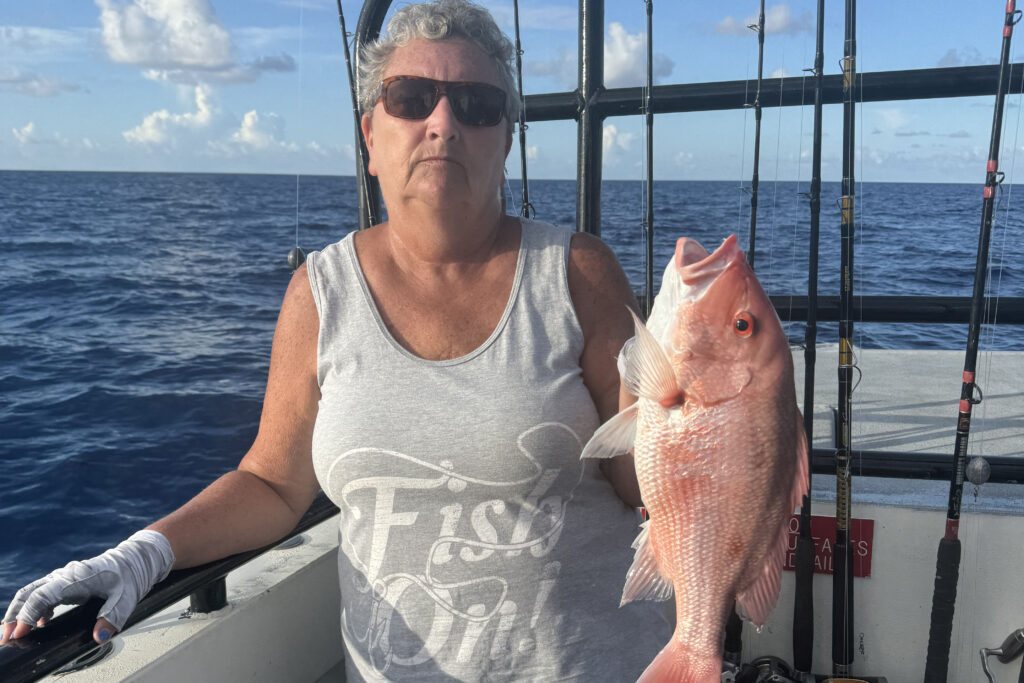
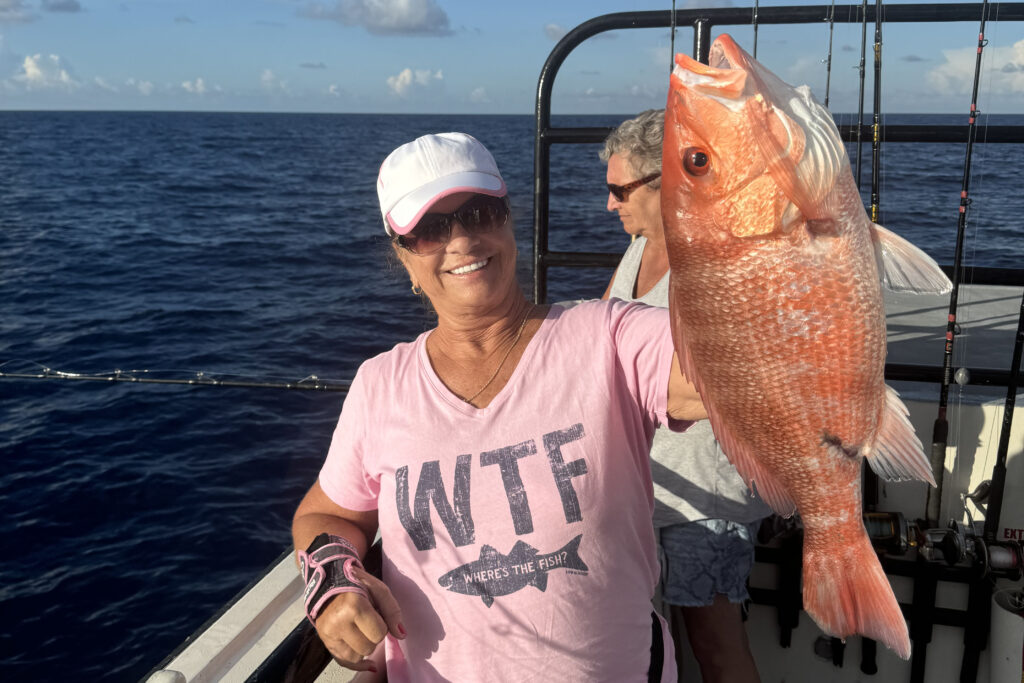
Red snapper are thick offshore, with the biggest catches weighing 20-25 lbs on our 12-hour extreme and 39-hour adventures. The largest red snapper are often caught on big live baits like monster spot tails, porgies, or white grunts. However, lately we have seen the big dead baits like bonita strips start to dominate the bigger red snapper too! The season remains open until the end of day August 27th, providing ample opportunity to target these red snapper before they close until June 2025.
Triggerfish are opening up August 1st, and we are pumped to start taking these guys home again on our long range trips. We see some monsters being caught on the 12 hour extreme, 39 hour and an 44 hour trips. They love small strips of squid like 2 inches long and about a quarter inch cubed.
Scamp grouper are being caught on our 12-hour extreme, 39-hour, and 44-hour trips. They respond well to small to medium pinfish while targeting mangrove snapper. Using around 50-60lb leader and about a 6-7ot hook is a good idea too!
Yellowtail snapper fishing has been excellent offshore. These fish prefer smaller strips of bonita or cut squid, about an inch or two long and a quarter inch cubed, to fit their smaller mouths. They are biting really well lately around the sundown time frame especially when we have had a chance to smash the red snapper during the day and then really target the yellowtail at the end of the trip.
Vermillion snapper are cooperating well, with good numbers and sizes being reported offshore. They are typically found in waters around 100 feet or deeper, responding well to cut squid or threadfin.
Porgies, almacos, and other heads and tails are common catches offshore. Mutton snapper have also shown up, with some trips landing good numbers. An extreme trip recently caught four keeper muttons, and a few 39-hour trips have reported mutton snapper as well with one big catch on a recent 39 hour of 8 keeper mutton snapper!
Seasonal Openings:
- Red grouper: Open until the end of June
- Triggerfish: Open all year except June & July
- Amberjack: Open May, September & October
- Red snapper: Open June 1st – August 27th (close August 28th at 12:01am)
- Gags: Will open September 1st until September 15 (close September 16th at 12:01am)
- All other species: Open all year
Remember that when fishing in deeper nearshore and offshore federal waters, the Descend Act requires you to have a descending device or venting tool “rigged and ready.” If you know how to use a venting tool, keep it prepared. If not, here’s some helpful advice: https://bit.ly/3L5HTnv. Using a descending device is straightforward and doesn’t require as much precision or practice as venting. You can even get over $100 worth of descending device gear for free by taking a short course on barotrauma mitigation, which helps more fish survive. The course only takes about 10-15 minutes, and you can learn valuable techniques to protect our offshore fishery. Spread the word by visiting: https://returnemright.org/.
TERMS OF REFERENCE-
Inshore: This covers the areas from the inner bays, through the bridges, and right up to the beaches.
Near Shore: This includes the coastal waters from the beaches up to twenty miles offshore, or up to a depth of 100 feet.
Offshore: This extends from twenty miles offshore or from a depth of 100 feet and beyond.
For more fishing reports, photos, videos, and other content, check out Hubbard’s Marina on Facebook, Instagram, YouTube, TikTok, Twitter, Pinterest, or Snapchat by searching for @HubbardsMarina. Remember our family motto: “If you’re too busy to go fishing, you’re just too busy!” Thank you for reading our report.
Capt. Dylan Hubbard, Hubbard’s Marina
Phone or text: (727) 393-1947
Website: Hubbard’s Marina

